ala breve
Rethinking Basic Lip Slurs
Reflections on Dr. John M. Long

Preventing Injuries in Marching Band
Selected Extended Choral Works by Black Composers

Remembering Dr. Edd Jones
From the “Woodshed” to the Classroom
No Child Left Behind in the Music Classroom
The Official Publication of the Alabama Music Educators Association August/September 2020 www.myamea.org
Inside this issue...
Landmark Music Festivals Landmark Music Festivals




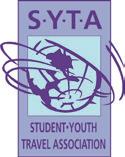
Festivals
Choice Music Festivals • Cruise Festivals • Festival Disney Festivals of Music • Field Studies Carnegie Hall Performance Fiesta-val Music Festivals • Heritage Festivals Manhattan Concert Productions • MidAmerica Productions Music in the Parks • OrlandoFest • Music USA Orlando Southern Star Music Festival . . . AND MORE



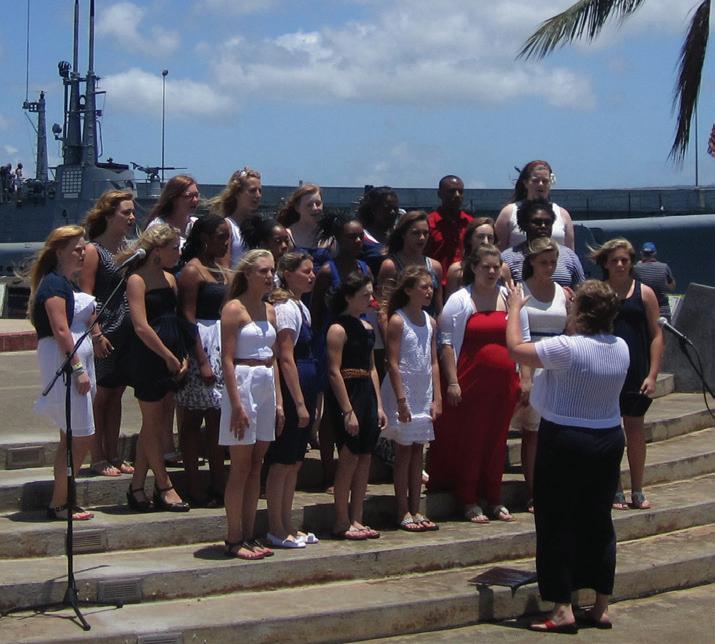

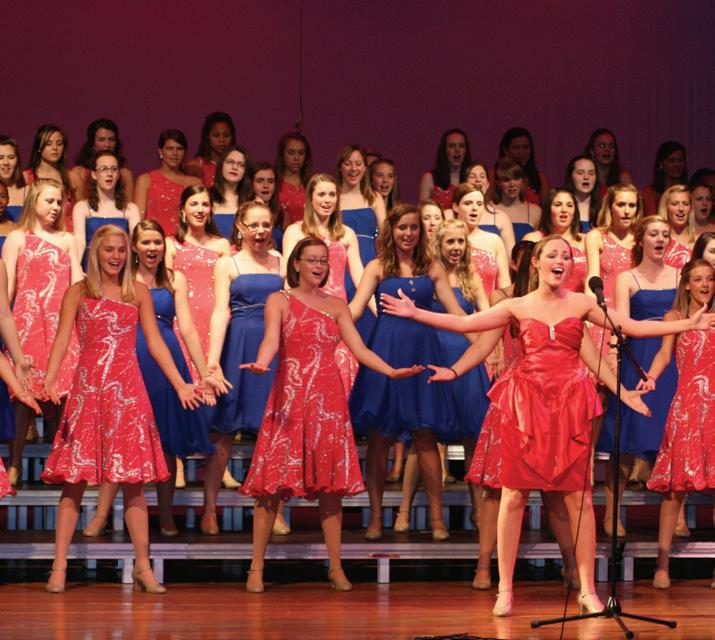
Destinations
Atlanta, GA • Branson, MO • Chicago, IL • Gatlinburg, TN New Orleans, LA • New York, NY • Orlando, FL Saint Louis, MO • San Antonio, TX • Toronto, ON Washington, DC • Williamsburg, VA . . . AND MORE Sample itineraries are available for each destination. If the festival or destination of your choice is not listed, call for a custom proposal. Contact SarahMartha Parker at (205) 714-7888 or sarahmartha@travellandmark.com to begin planning your tour today!


www.travellandmark.com (205)
IATAN International Airlines Travel Agent Network
(800) 681-4188
714-7888
Landmark Tour & Travel’s Music Festival Division has more than twenty years experience planning student tours. Landmark’s team of expert travel professionals can customize your tour to any major choral or instrumental festival at any location that you choose.
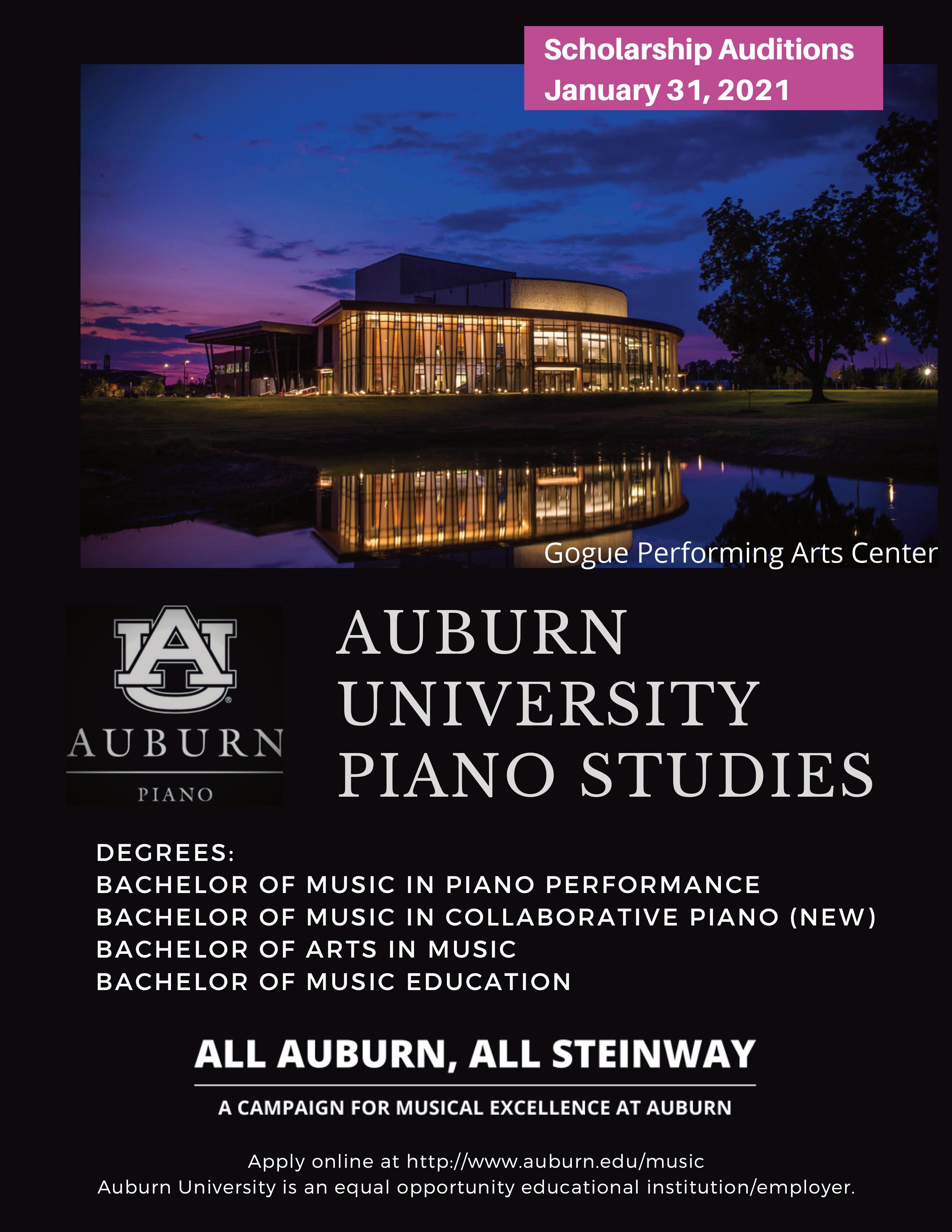
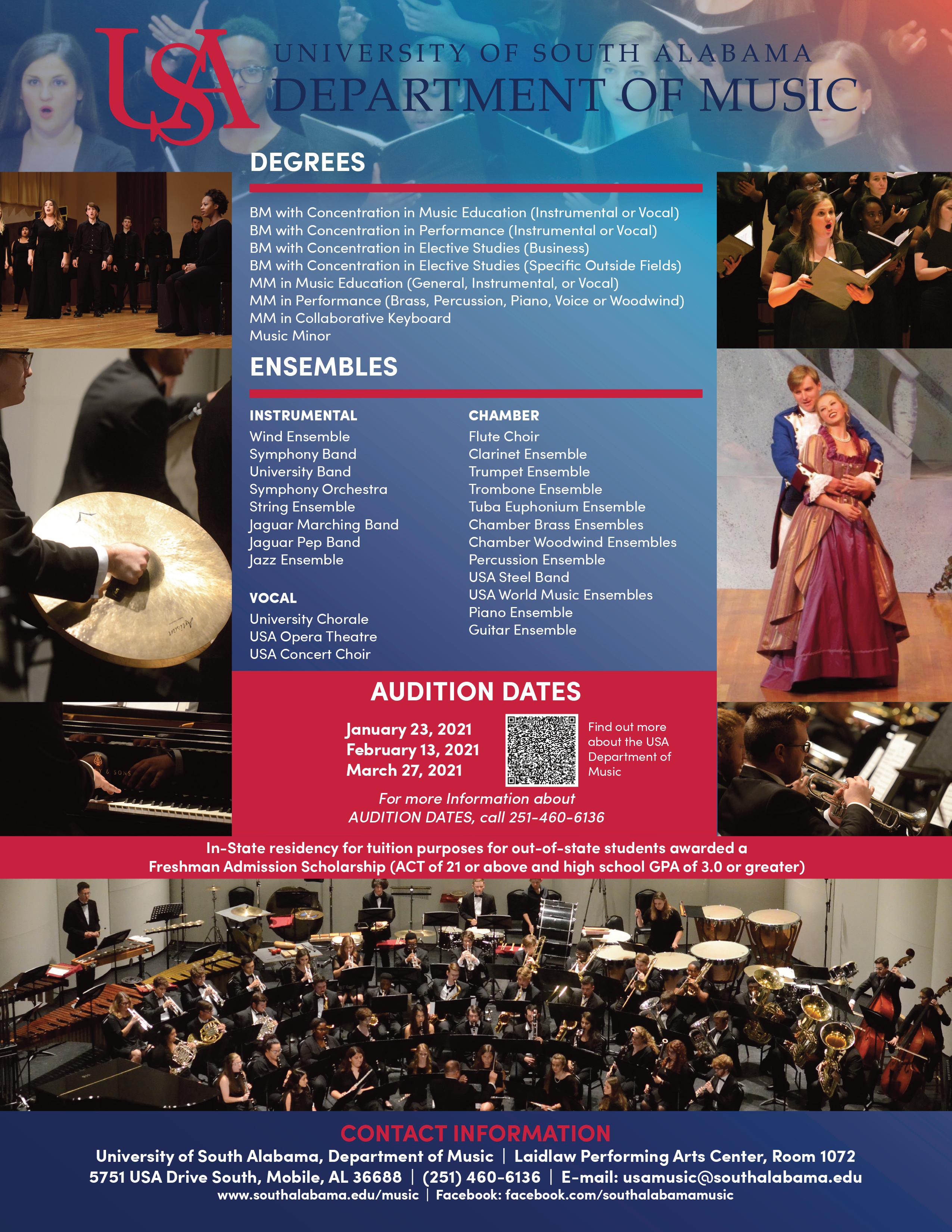

ala breve 5 Features... 8 AMEA Presidents - Past to Present 9 AMEA Governing Board Directory 13 Industry/Institutional Members 17 General Music Reviews by Deanna Bell 18 No Child Left Behind in the Music Classroom by Jackson Vaughn 23 Selected Choral Works by Black Composers by Dr. William Powell 24 Remembering Dr. Edd Jones 26 What Can I Do For You? Reflections on Dr. John M. Long 30 Rethinking Basic Lip Slurs by Dr. Thomas Lukowicz 32 From the “Woodshed” to the Classroom by Dr. Matt Leder 35 Noteworthy: Alabama State Council on the Arts Fellowship 35 Noteworthy: All-National Honor Ensembles 36 AMEA and Division Schedule of Events 40 Preventing Injuries in Marching Band... by Robert Glasscock 41 2021 AMEA Professional Development Conference ala breve the official publication of the Alabama Music Educators Association August/September 2020 Advertisers Index Arts Music Shop, Inc ..................back cover AU Composition & Technology 21 AU New Faculty 41 AU Piano Studies .......................................3 Huntingdon College Bands 42 John M Long School of Music (Troy) 12 Landmark Tour and Travel .........................2 Samford University 15 University of Alabama Bands 43 UAB Music ...............................................33 UNA Department of Music ......................34 University of South Alabama Bands 22 University of South Alabama Music 4 Yamaha .....................................................11 6 ..................... President 8 ..................... Registrar 10 ........................... AVA 13 .......................... HED 14 .............................AOA 16 .................. Elem/Gen 18 ..................... cNAfME 20 ABA Departments...
David Raney, AMEA President
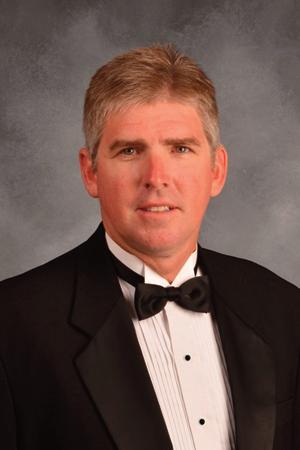
Expect It, Accept It, and Cherish It
I am humbled and honored to write my first article as the AMEA President. Please forgive me if I make claim to the most unique start of a presidency since 1946. Despite the unique start of my term, I am most certainly excited to work with the amazing team of AMEA Staff and Governing Board. I am well aware the foundation of this association was established by the great leadership of those that came before me. I would like to thank Greg Gumina and Susan Smith for providing me with the mentorship and guidance as I step into this position.
As I write this article, I am still unsure how the fall semester will look for our students. By the time you read this article, my hope is that we all have a clear understanding of how to approach the challenges that lie ahead within our own unique situation. Although the plans have changed and your curriculum may have been altered, one thing that has not changed is the commitment our educators have towards their student’s education.
A truth that is evident in our band program is that adversity can be a great motivator. Adversity is often the tool that bring students together to work as one and overcome enormous obstacles. A beloved former director of mine was once overheard saying, “Students must have a problem to overcome and if they don’t, I will make one up for them”.
One thing is clear, we currently do not
have to seek out challenges to overcome; however, we must constantly remind ourselves that challenges are what make us stronger and better at what we do. Challenges are uncomfortable but also give us an opportunity to appreciate what we had and will have in the future. For some, this year may create your most fond memories with your students or your most proud moments as an educator. I challenge you to open your mind and allow those moments to happen. Expect it, accept it, and cherish it.
Spring/Summer Activities
Watching everyone jump into action during the onset of this pandemic was nothing short of an amazing site to witness. Greg quickly gathered the leadership and started collaborating ideas and brainstorming for solutions. Over the coming months, complete websites were developed, Town Halls were organized, resources were gathered, the Advocacy Leadership Force was established, and constant collaboration with NAfME and other state leaders became daily events. Identifying everything that transpired over the summer is more than can be mentioned in this article.
Although the opportunity to advocate for music education at the annual “Hill Day” event in Washington, DC was cancelled, NAfME hosted an outstanding virtual National Assembly that exceeded our preconceived expectations with an online event.

6 August/September 2020
We will promote and share the successes
and achievements of our amazing educators in order to inspire and recruit those that will one day take our place.
2021 AMEA Conference
Of all the plans AMEA has made over the summer, none have been as difficult as addressing the upcoming conference. The AMEA staff has always provided outstanding conference experiences with each year progressively improving technology, performances, and professional development sessions. Evidence of these improvements can be found in the consistent growth of attendance each year.
The foundation of our conference is based on providing experiences that will expand and promote your professional growth. This year our conference may look different but the goal remains the same. We are committed to provide a conference experience that will be rich
Division Leadership
Our Division Leaders have done an amazing job going above and beyond the call of duty this summer. We have met as a board more this summer than we typically meet for the entire year. They have eagerly worked to provide back to school guidance documents, emergency “Essential Standards” for programs that must teach virtually, and they remain on standby for any requests received at a moment’s notice. Please help me thank your Division Leaders for the work they have done, and will continue to do, as we navigate through these times.
Goals and Agenda
As your president, I will focus my efforts to achieve a set of goals I feel
AMEA. These goals will continue the path my predecessors have established in the advancement of music education in our state.
We must promote unity between our divisions by communicating often and share ideas of successful practices. Despite being called “Divisions,” we must be united to provide a stronger association that is more efficient in providing opportunities for our students.
We will enrich our advocacy efforts to provide more resources for members by adding tools to promote music education in your own school system. We must all take an active part and speak the same language to the system leaders across our state in order to be effective in our efforts.
Support for our teachers should be established by building relationships with legislators and school leaders across our state. We know how essential music education is and we must invite everyone to be a part of the benefits we bring to the education system. The future of music education is dependent upon our emerging leaders and the recruitment of new teachers. We will promote and share the successes and achievements of our amazing educators in order to inspire and recruit those that will one day take our place.
Most of these goals rely on our ability to improve communication with our membership. We will advance our technology to provide innovative ways to stay connected throughout the year as well as provide unique opportunities for professional development.
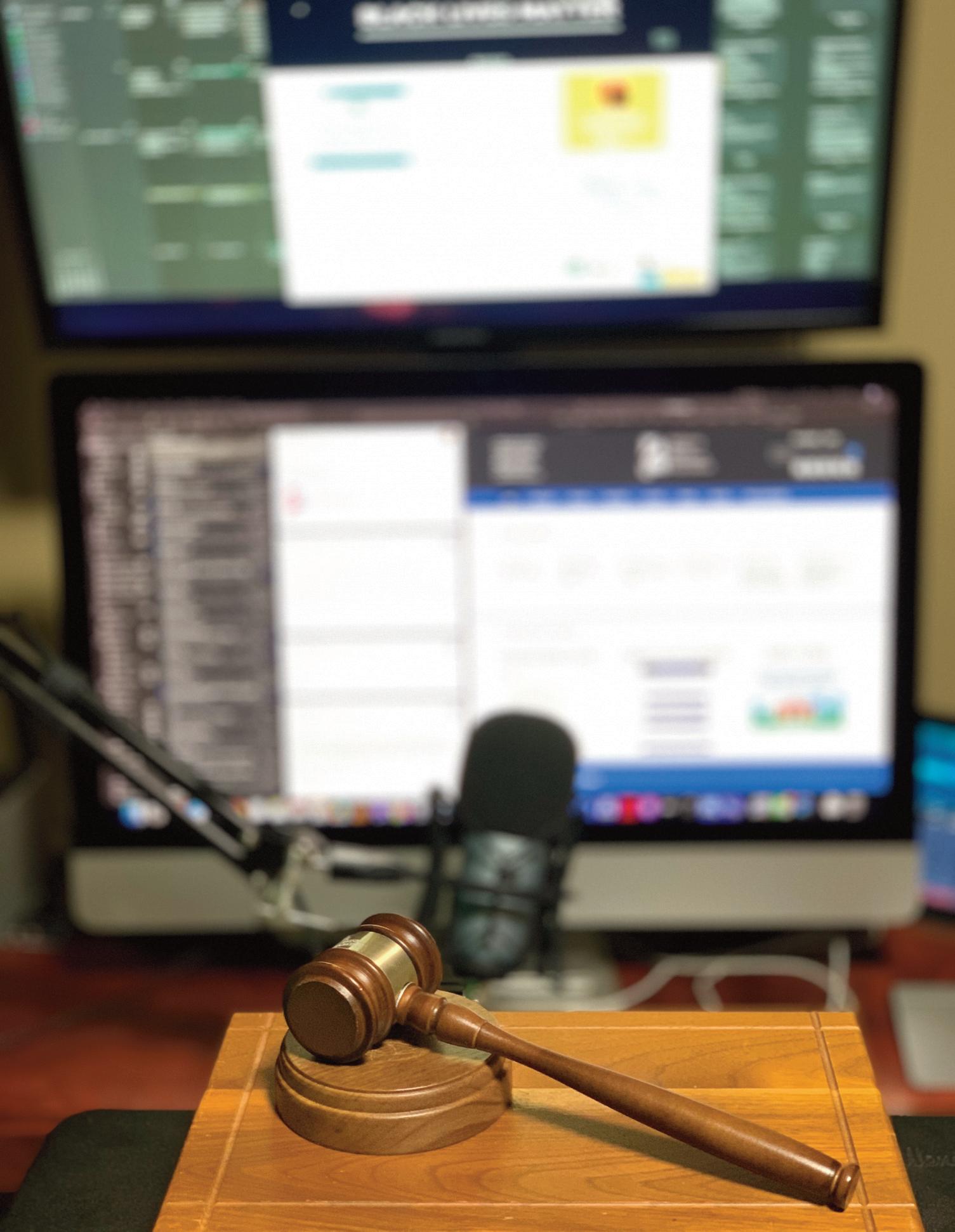
I feel we have entered a defining moment for music education and you are a part of the history that is taking place. Write your story well and always remember to expect great things, accept the challenges, and cherish the rewards.
David Raney
ala breve 7
Pat Stegall - AMEA Registrar

deliver to our administrators, ALSDE, and law makers!
Why? We all know that we need to be members of NAfME and AMEA. It is part of being involved in our National and State professional organizations. We know that we need to have professional development opportunities. We know that we have an AMEA board that plans the conferences and other important activities for us. But have you considered WHY your membership is important? It should be very obvious at this time that our support of these organizations is imperative! NAfME is providing excellent materials and resources for us. Our state AMEA leaders are offering guidance and direction for each division. Our unity is more important than ever if we are to continue to have a consistent message to
If it is possible, we REALLY need a face-to-face conference this year so we can continue to share what we are doing and learning about meeting the challenges we are encountering due to the Covid-19 pandemic. It may not be possible…we will have to see what the next few months bring, but I for one am looking forward to hearing about the stories, solutions and new opportunities to be creative.
When you are joining or renewing your membership, think of those music teachers in your area that may not be active members, and send them a message inviting them to join! You could send an email with their contact information to me at pstegall@mscs.k12.al and I will invite them!
Remember to remind your colleagues to
join, include the new music teachers, invite the inactive music teachers and be involved as a mentor to the young music teachers.
Renew your membership now at www.nafme.org Membership in NAfME is required for participation in state MEA sponsored events like the AMEA Conference, the Elementary Division Fall Conference, All-state and Musical Performance Assessments. Joining NAfME secures your membership in AMEA and in your division.
Watch the AMEA website and register for the 2021 AMEA conference online at www.myamea.org when it becomes available. You will find it is easy and will save you time and money. Reunite with friends and colleagues from all over the state in January. Rejuvenate your energy and renew your enthusiasm for the rest of the school year! I can’t wait to hear about your experiences!
AMEA Presidents - Past to Present
1998

2000 John McAphee
2002 Tony Pike
2004 Becky Rodgers
2006 John Baker
2008 Pat Stegall
2010 Steve McLendon
2012 Sara Womack
2014 Carl Hancock
2016 Susan Smith
2018 Greg Gumina
2020 David Raney
8 August/September 2020 1946 Yale H . Ellis 1948 Walter A . Mason 1950 Vernon Skoog 1952 John J. Hoover 1954 Lamar Triplett 1956 Carleton K . Butler 1958 Mort Glosser 1960 Wilbur Hinton 1962 Lacey Powell , Jr . 1964 G. Truman Welch 1966 Jerry Countryman 1968 Floyd C . McClure
Jerry Bobo
Frances P. Moss
George Hammett
Frances P. Moss
S . J. Allen
W. Frank McArthur
Paul Hall
Lacey Powell , Jr . 1984 Johnny Jacobs 1986 Merilyn Jones 1988 Ronald D. Hooten
Ken Williams 1992 Dianne Johnson 1994 James K . Simpson
1970
1972
1974
1975
1976
1978
1980
1982
1990
Vinson
1996 Johnnie
Michael Meeks
,
.
Jr
AMEA Governing Board 2020-2021
President David Raney

Sparkman High School
2616 Jeff Road Harvest, AL 35749
256-837-0331 draney@madison.k12.al.us
Immediate Past President
Greg Gumina
Shades Valley High School
6100 Old Leeds Road Irondale, AL 35210 (205) 956-4638
ggumina85@gmail.com
President, AOA
Daniel Stevens University of North Alabama One Harrison Plaza
Florence, AL 35631 (256) 765-4708 dstevens1@una.edu
President, AMEA Collegiate Jackson Vaughan jvaugha1@samford.edu

Industry Representative
Becky Lightfoot
Arts Music Shop
3030 East Blvd Montgomery, AL 36116 334/271-2787
beckyl@artsmusicshop com
Executive Director
Editor, Ala Breve
Garry Taylor 1600 Manor Dr NE Cullman, AL 35055 (256) 636-2754


executive_director@myamea.org
Garry Taylor, Editor & Advertising Manager 1600 Manor Dr NE Cullman, AL 35055 (256) 636-2754
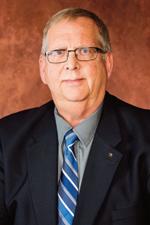


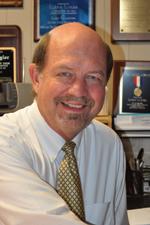


executive_director@bellsouth net
President-Elect
Rob Lyda
Cary Woods Elementary School
715 Sanders Street Auburn, AL 36830 334-663-0898 lydarob@me.com
Recording Secretary
Carla Gallahan

113 Long Hall Troy University Troy, AL 36082 (334) 670-3502 recording_secretary@myamea.org
President, AVA
Randall Fields
Bob Jones High School 650 Hughes Road Madison, AL 35758 (256) 772-2547 randall.fields.ava@gmail.com
AMEA Collegiate Advisor

Meghan Merciers
University of North Alabama UNA Box 5040 142 Music Building Florence, AL 35632-0001 256.765.4518 mmerciers@una.edu
Assistant Executive Director


Rusty Logan 2020 Janabrooke Lane Auburn, AL 36830 (334) 663-1702 rlogan9853@gmail.com
ADVERTISING & COPY DEADLINES
Fall - August/September (Back to School) issue: July 15
Winter - October/November (Conference) issue: September 15
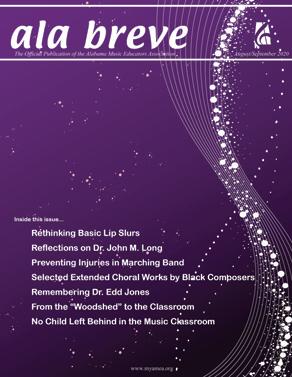
Spring - May/June (All-State) issue: January 15
Summer - May/June (Digital Only) issue: April 15
Treasurer/Registrar
Pat Stegall
AMEA Registration PO Box 3385 Muscle Shoals, AL 35661 treasurer_registrar@myamea.org
President, ABA
Terry Ownby
Florence High School 1201 Bradshaw Drive Florence, AL 35630 (256) 768-2200
tsownby@florencek12.org
President, ELEM/GEN
Betty Wilson
Deer Valley Elementary 4990 Ross Bridge Parkway Hoover, AL 35226 (205) 296-3311
bettyboop122372@att.net
President, HED Division
Michael Zelenak
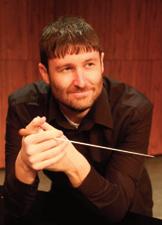

Alabama State University 915 S. Jackson St.
Tullibody Music Hall Room 208 Montgomery, AL 36104 334-604-9187
Alabama Department of Education Arts Education Specialist
Andy Meadows 50 North Ripley Street Montgomery, Alabama 36104 (334) 694-4768
ameadows@ALSDE.edu
Unless otherwise indicated, permission is granted to NAfME members to reprint articles for educational purposes. Opinions expressed in this publication are not necessarily those of AMEA or the Editor. All announcements & submissions are subject to editorial judgement/revision.The Alabama Music Educators Association is a state unit of NAfME: The National Association for Music Education, a voluntary, nonprofit organization representing all phases of music education in schools, colleges, universities, and teacher-education institutions. Active NAfME/AMEA membership is open to all persons engaged in music teaching or other music education work.
Ala Breve is published four times a year (August, October, February & May) by the Alabama
Educators Association and printed by Hardwick and Son Printing in Dothan, Alabama. Bulk rate postage paid at
Alabama.
Music
Dothan,
ala breve 9
July 23, 2020
Who would have thought five months ago that the opening of the 2020-2021 academic year would be met with so many uncertainties? I suspect that for most chorus teachers in a “normal” year, the anticipation of our first days of school is filled with excitement over reconnecting with students and colleagues, picking literature for our ensembles, and coming up with engaging lessons. However, I have to admit that this year, my excitement is tinged with fear. What does the opening of school look like? How will I connect with my students? How will I prepare them for the next level? What is going to happen to my program? In fact, we are all entering unknown territory together and being challenged to make connections, teach, and assess learning in ways we never imagined. I hope your Vocal Association will be a valuable resource for you as we all navigate the unknown together.
To meet the changing needs of our organization we have formed a Task Force for Virtual Learning, chaired by Dr. Chris Brown from Foley High School. This task force has already spent many hours curating resources for virtual learning that you might find useful moving forward. These resources include engaging lesson plans, instructional videos, and links to resources featuring best practices for virtual instruction. Chris also created a guide for chorus to return to face to face instruction based on the most current research available.
In the recent board meeting, we identified Essential Standards based on the Alabama Course of Study that are critical to addressing the minimum skills needed for students to progress. Your board hopes that these will be helpful as you plan lessons for the school year.
If you haven’t already done so, now is the time to renew your NAfME membership so you and your students are eligible to take full advantage of AVA offerings.
Please check the AVA website for the most up to date calendar information.
Your AVA board has met virtually and face-to-face this summer to plan for the upcoming year, and to revise the AVA Handbook. We will be presenting those plans and revisions at
our virtual general membership meeting as part of the Fall Workshop on the afternoon of September 10. Some highlights of our summer board meeting are as follows:

Fall Workshop will be September 10. This year’s workshop will be virtual and will be offered to AVA members free of charge. We are planning All-State reading sessions, information for new teachers, training for the All-State audition process, virtual lesson ideas, and the general membership meeting. Please plan to attend the virtual general membership meeting at 4:00 PM to vote on handbook revisions. Please look for future communications regarding registration for the Fall Workshop.
All fall AVA activities will be virtual. This includes AllState auditions; district-level Outstanding Accompanist, Outstanding Choral Student, and Pat Blackwell Music Education auditions and interviews.
For now, we are remaining optimistic that the spring semester will look more normal. However, your board has worked on contingency plans for the spring events. Please look for a questionnaire from AVA to help us plan for the best ways to serve you and your students.
The deadline for submissions to perform or present sessions for the AMEA winter conference has been extended to September 1. Because most districts were not able to host SCPA last spring, you may submit a recording from the 2019-2020 school year.

We have reinstated the Advocacy Committee. Dr. Khristina Motley from Hillcrest High School will serve as chair. One of the goals of this committee is to connect with educators who may not be fully engaged with the opportunities AVA provides. If you know of personnel changes in schools in your area, will you please help your district chair by sharing contact information. We want to include every chorus teacher who wants to be a part of the organization.
As we move forward, I hope that your vocal association remains as relevant as ever, providing resources for our teachers and educational opportunities of the highest caliber for our students.
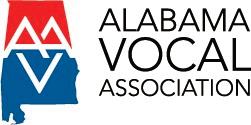
Wishing you the best as you begin your school year,
Randall
10 August/September 2020
Randall Fields- President, Alabama Vocal Association
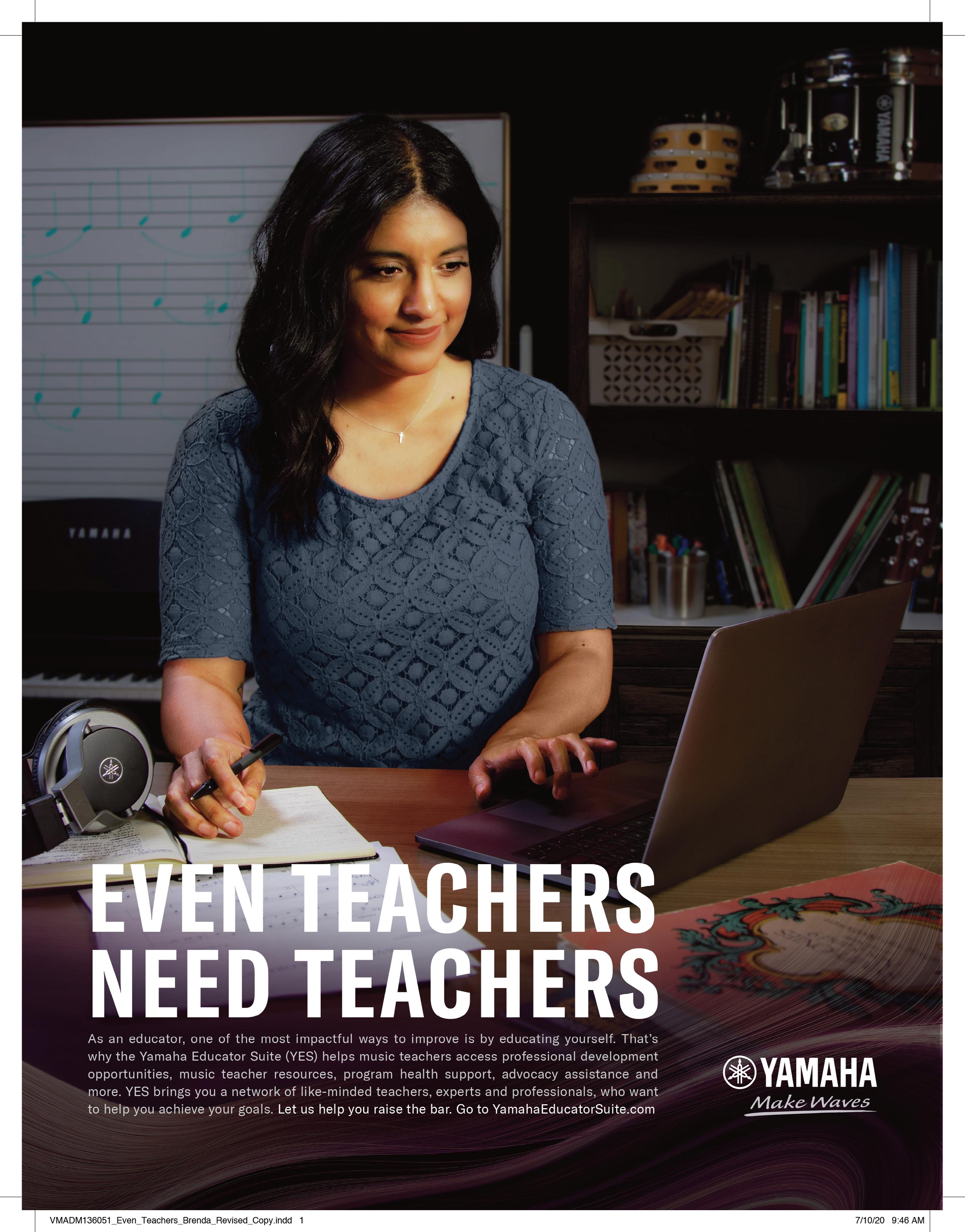
Troy University is a fully accredited institutional member of the National Association of Schools of Music (NASM)
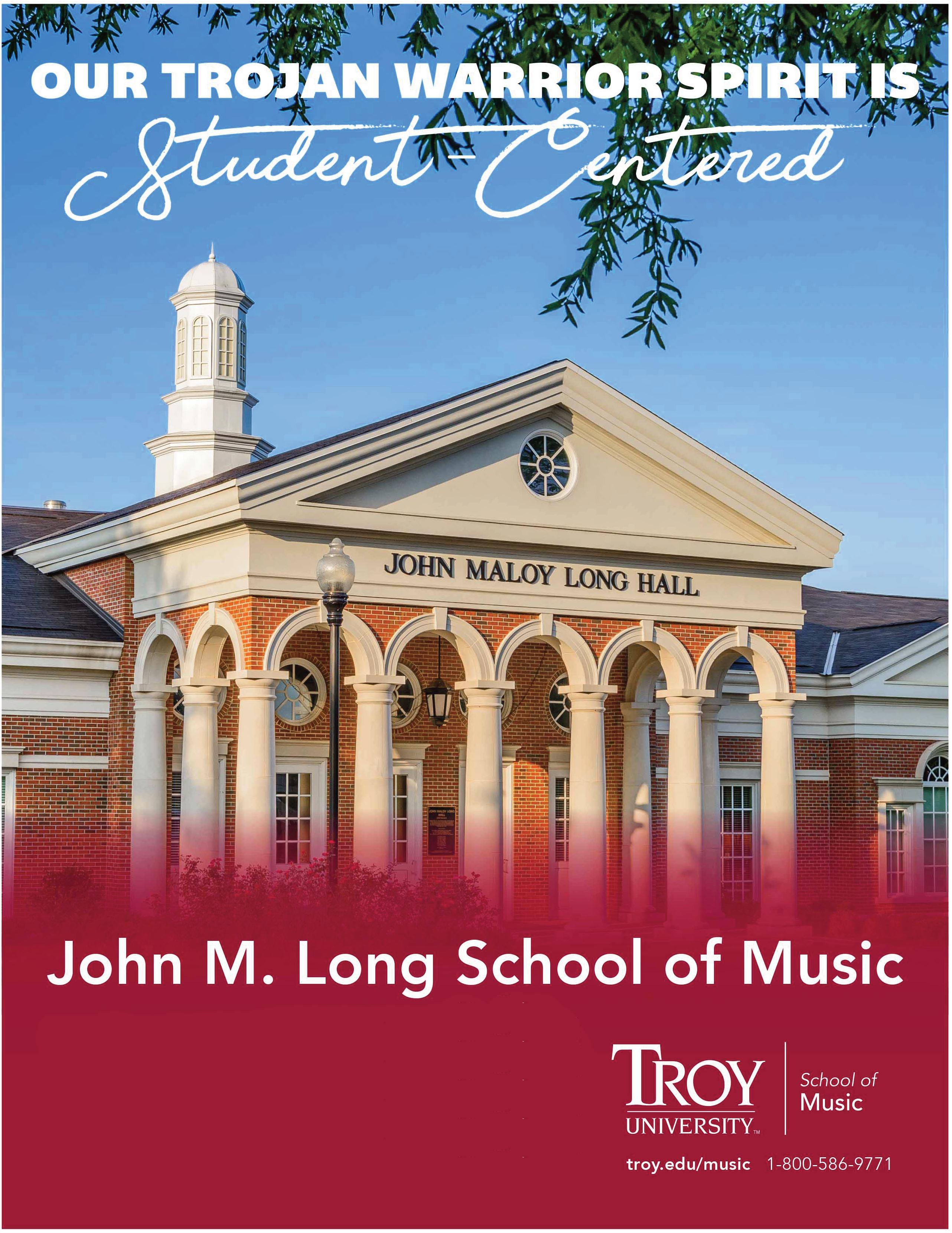
The New Abnormal
I never thought that I would want to go back to school this bad. (That’s abnormal.) I’ve got plenty of work to do, and plenty of stress to deal with. But to be honest, I miss my students and I miss being a music teacher. If you’re reading this, you know what I’m talking about. A school is a unique microcosm filled with its own relationships and interactions. Throw music into the mix and it’s a great place to be. Why would I want to be anywhere else? I’m ready to rehearse!
Our professional organizations have exceeded every expectation during these trying times. Normally large organizations move slowly, but the speed at which they have addressed this pandemic has been amazing. (That’s abnormal.) Visit the NAfME COVID19 website at https://nafme.org/ covid-19/. You’ll probably stay longer than you anticipated. NAfME has assembled a comprehensive collection of resources that will benefit all music educators. In addition, everyone should read the College Band Directors National Association’s report at https://www.cbdna.org/about/thecbdna-report/. This report will answer questions posed by even the most
demanding administrators. From a different perspective, more information is available on the American Choral Directors Association site at https://acda.org/advocacy/. To find online teaching strategies, my favorite site is http://kpcrossacademy.org/. The K Patricia Cross Academy presents numerous teaching strategies with video recordings and instructional resources targeting college professors that can also be modified for use with all grade levels. Finally, don’t forget about AMEA’s Alternative Music Teaching Resources folder at https://myamea.us. There’s plenty of information to go around.
News for music education faculty: The ALSDE has removed the Praxis Core Basic Skills Exam from the list of requirements for students applying to enter Educator Preparation Programs. (That’s “abnormal”!) Hopefully, more students will enter these programs and reverse the growing teacher shortage. Let’s also congratulate faculty members from Troy University, Samford University, and the University of Alabama – Huntsville who have recently earned approval for their Class B, Alternative A, and Class A Choral and Instrumental programs by the ALSDE.
Every child in Alabama deserves to be taught by a highly qualified music educator.
Researchers take note: Applications to present research posters at the 2021 AMEA conference will be accepted until Nov, 2, 2020 at 11:59 p.m. Go to the AMEA website for more details. In addition, the American Educational Research Association (AERA) is continuing its AERA Grants Program. This program provides small grants and training for researchers who conduct studies using quantitative methods. Apply before Sept. 10, 2020 at https://www.aera.net/ProfessionalOpportunities-Funding/AERA-Funding -Opportunities/Grants-Program

Kudos to HED past-president Mildred Lanier for encouraging Alabama Governor Kay Ivey to proclaim March 2020 as "Music In Our Schools Month." Ms. Lanier’s advocacy efforts can be an inspiration to all us. Let’s set a goal to continue this tradition. Wouldn’t it be great if every school and municipality celebrated MIOSM? Now, there’s an “abnormal” to aim for!

ala breve 13
Michael Zelenak -President, Higher Education Division
AMEA Industry/Institutional Membership 2020-21
Madison Band Supply 1604-B Hughes Road, Madison, AL 35758 University of Alabama at Birmingham 950 13th Street S., Birmingham, AL 35294 University of Alabama in Huntsville 301 Sparkman Drive, Huntsville, AL 35899 University of North Alabama 1660 Tune Ave., Florence, AL 35630 University of South Alabama LPAC 1072, 5751 USA Drive South, Mobile, AL 36688
AMEA would like to express appreciation to the following partners who have joined AMEA in our efforts to promote music education in Alabama. Please support these industry/institutional members who support you as music educators!
Daniel Stevens - President, Alabama Orchestra Association

Is it possible to feel exhausted before a new academic year has started? For many classrooms, the prospect of a Plan A, B, C, and D can become reality at any moment. Virtual or hybrid instruction poses hundreds of technical logistics to overcome, as music education incorporates so much tactile and experiential learning. Fortunately, Alabama has some of the nation’s finest music teachers who are constantly innovating unique ways to connect students with the music curriculum.
However, it is important to keep in mind that poor mental health in ourselves and our students during the pandemic may stop the ability to learn at the front door. Early in the semester, celebrate small victories along the way, and motivate students through discovery and wonder.
I am reminded of a 2-minute spot on a morning news show that begins, “We leave you this Sunday morning with a moment of nature…” It’s interesting to see my family go about a busy day, multi-tasking multiple electronic devices, work around the house, and calls from the office, but when a 2-minute moment like this reminds us to breathe, we pause and find stillness.
Take a moment yourself right now, and search for one of the following five pieces to find a few moments of peace:
+ Samuel Barber – Adagio for Strings (9’)
+ Amy Beach – Romance for Violin (6’)
+ Edward Elgar – “Nimrod” from Enigma Variations (4’)
+ Ennio Morricone – Gabriel’s Oboe (4’)
+ Sergei Rachmaninov - Symphony No. 2 – III. Adagio (15’)
To take a minute to find the center, we are reminded why we boldly owned music as a career. We all desperately yearn for harmonious moments in front of our students and know that when our world improves, we will never take live music for granted again.
I am honored to serve AMEA and AOA as President for the next two years. I work with 22 talented colleagues that uplift the AOA mission to “develop a comprehensive program that will be of musical and educational benefit to string/orchestra teachers and their students.” AOA hopes to provide a common meeting ground and clearinghouse for an exchange of ideas and methods that will stimulate professional growth among teachers that will, in general, advance the standards of
musical and educational achievement for the students of Alabama.
Please refer to the AOA website at www.alabamaorchestraassociation.org to engage with us. Let us help you find resources for your ensembles, classrooms, and virtual educational space.

This year, we are excited to bring world-renowned clinicians to Alabama:
AMEA CONFERENCE – January 2021:
Dr. Christopher Selby – author of Habits of a Successful Orchestra Director, Music Theory for the Successful String Musician, and co-author of the Habits of a Successful String Musician series, published by GIA. He is an active clinician and has presented sessions at two Midwest Clinics, the 2016 NAfME National Conference, five American String Teacher Association (ASTA) National Conferences, and he currently directs the high school orchestras at the School of the Arts in Charleston, South Carolina.
ALL-STATE ORCHESTRA – February 2021:
Ms. Helen Cha-Pyo – is the Artistic Director of the Wharton Institute for the Performing Arts and Principal Conductor of the New Jersey Youth Symphony. For 16 years as Music Director and Conductor of the Empire State Youth Orchestra, Ms. Cha-Pyo has inspired hundreds of young musicians to perform at the highest levels, resulting in 3 prestigious ASCAP awards. Born in Seoul, Ms. Cha-Pyo immigrated to the US when she was 12 and has studied music at The Juilliard School, Oberlin College Conservatory of Music, and the Eastman School of Music.
Mr. Russell E. Berlin, Jr. – is inducted into the Missouri Music Educators Association Hall-of-Fame, for a nationallyrecognized 30-year career in the Lee’s Summit School District, in addition to a 20-year career as conductor with the Youth Symphony of Kansas City. Under his direction, Mr. Berlin’s ensembles have appeared at the Midwest International Band and Orchestra Clinic, Carnegie Hall, the International Youth, and Music Festival in Vienna.
14 August/September 2020
“Music has the power of producing a certain effect on the moral character of the soul, and if it has the power to do this, it is clear that the young must be directed to music and must be educated in it.” – Aristotle, Politics
Ms. Fariga Drayton – is an experienced educator in her tenth year in the Kirkwood, Missouri School District, teaching beginning strings, and is the director for the Nipher Middle School and Kirkwood High School Symphonic Orchestra. Out of 18 years as an educator, Ms. Drayton’s ensembles have been featured at the Midwest Clinic International Band and Orchestra Conference and she has featured the youngest ensemble ever invited to perform at the Nation Youth Orchestra Festival (Director’s Choice) at Carnegie Hall. Known as a 30-year professional cellist specializing in alternative music, she has been featured at multiple music educator conventions, and has performed with the Transiberian Orchestra, the New York Gilbert and Sullivan Players Mid-West Tour, and the Southern Illinois Music Festival.
Welcome back to what I hope will be another great year! We recognize each of you for your tremendous accomplishments and know we have a dynamic year ahead. The Alabama Orchestra Association is looking forward to serving you and your students throughout the upcoming seasons. Blessings, Daniel
Stevens
Important AOA Dates for 2020-2021
Samford University School of the Arts Division of Music
Welcomes
Dr. Morgan Soja
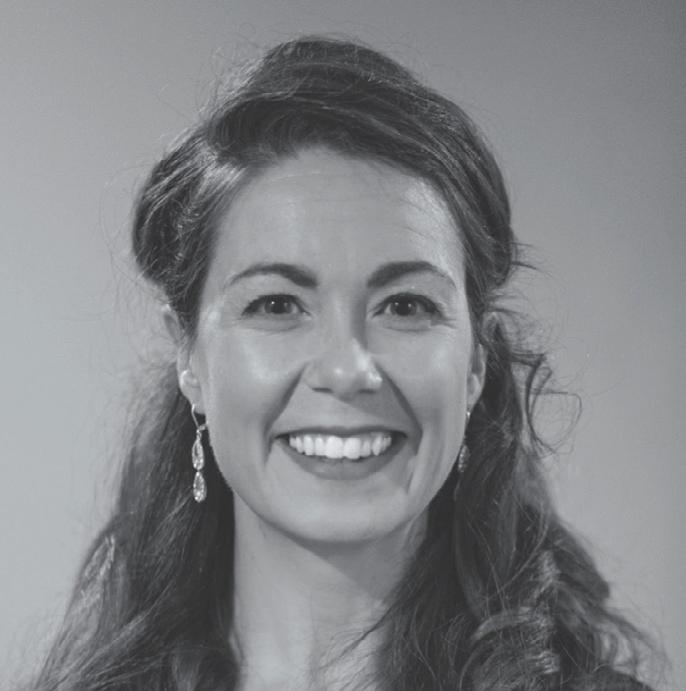
Assistant Professor and Director of Music Education
Dr. Soja comes to Samford University with extensive experience teaching music education at all levels, and is poised to connect Samford music education students with the Alabama Music Educators Association.
The Division of Music offers programs in commercial music, composition, music education, music and worship, and performance.
For more information visit samford.edu/arts or email our arts recruiter at arts@samford.edu.
ala breve 15
All-State Audition Materials Available Online ……….........................................................................................……….August 5, 2020 All-State String Auditions (multiple locations).........................................................................................................…October 9-18, 2020 All-State Woodwind, Brass, and Percussion Auditions ……….........................................................…….……November 6-15, 2020 AMEA Conference……………………….........................………………………….......……………………January 21-23, 2021 All-State Orchestra Festival………………….....................................……………..……….......…………….February 11-14, 2021 Orchestra Music Performance Assessment …………………..............................................…………….………..April 16-17, 2021
Lemons or Lemonade?
Normally, this article would focus on getting back into the classroom and the start of a brand-new school year. It would be filled with optimism and joy about lesson planning and getting to see our colleagues and students again. This year, not so much. This year many teachers are filled with anxiety and fear about returning to the classroom. Many teachers are faced with the new challenges of social distancing, sanitizing instruments, and teaching online or teaching on a cart. To top it all off, Principals and Superintendents don’t have the answers to many of the questions that teachers and parents have. We are all doing our best to address multiple scenarios that may arise due to COVID-19.
What we know: many school systems have delayed the start of school. Several have opted for virtual learning only, while several have given the parents the option to choose in-person learning or virtual learning. Teachers will have to be creative with their teaching and delivery options. Teachers also have a choice. We can choose what attitude and skills we bring to the table. Will we bring our best selves? Will we choose to collaborate with our fellow music teachers? Will we choose to adapt and grow no matter what our Principals ask of us? Our attitudes are a choice. Motivational speaker, Zig Ziglar says “Your attitude, not your aptitude, will determine your altitude.” My son’s best baseball coach often told them “You can’t control what happens to you, but you can control how you react to it.” He didn’t tolerate any “fit pitching” after a bad swing, dropped ball, strike out, etc. This coach expected your best attitude and effort each time you came to the
field. We must bring the same thing when we show up at school or turn on the computer.
AMEA and NAfME have published several articles and have updated their webpages to help teachers navigate through these tough times. On the AMEA webpage, www.myamea.org you can find Covid-19 resources contributed by your fellow teachers. The National Association for Music Education has more free resources at https://nafme.org/covid-19/. This website includes tips on instrument cleaning, online learning and copyright, professional development resources and lesson plans. In addition, to guide your planning for in-person, hybrid or virtual learning, the Essential Standards for music education have been added to the Alabama Roadmap for Reopening Schools which can be found the ALSDE webpage https://www.alsde.edu/. I would like to thank Dr. Rob Lyda, Dr. Becky Halliday, Dr. Jeff Shultz and Devon Lacey for their tremendous work in developing these essential standards.
During this transitional time, we all must continue to communicate, collaborate and care for each other. Teachers must address their own and their students’ social and emotional wellness. Key components of music education include the way making music with others makes us feel and think. Participating in music ensembles enhances our social awareness and allows us to build relationships. This connection can be lost during virtual learning. There are several great resources for addressing social and emotional learning (SEL) on the NAfME webpage and in the Alabama General Music K-8 Essential
Standards published in the Roadmap for Reopening Schools. The Essential Standards have been added to the Elementary AMEA Facebook page and they have been shared via email to our membership. If you did not receive the email, please check your spam folder and/or contact me or President elect Sarah McLendon to update your email address. Connecting through the virtual workshops offered by AMEA, NAfME and others is a great way to keep in touch, as well as learn and collaborate with your colleagues.
In closing, we are faced with a choice; we can lament all the lemons that have come along with COVID-19, or we can make lemonade. Our good friends Randy Delles and Jeff Kriske once said, “Whenever you’re feeling dismayed, Or someone rains on your parade, Remember this tip, Don’t give up the ship, With Lemons you make Lemonade!” I hope you choose to make lemonade this school year!
Musically Yours, Betty R. Wilson, President, AMEA Elementary/General Division

East Alabama General Music Workshop, August 29, 2020, ONLINE Register here: https://forms.gle/ aeP2DUM9XTHLR6Vz5
AMEA Choral Festival: October 16, 2020: Cancelled/Postponed October 2021, Contact Melissa McIntyre, Festival Director Ameafestival@gmail.com

AMEA/AOSA Fall workshop: October 17, 2020, Jeremy Howard, online. More details to come!
AMEA In-Service Conference
Jan 21-23, 2021, Renaissance Montgomery Hotel and Spa
Details will be available soon at www.myamea.org
Betty Wilson - President, Elementary/General Division
16 August/September 2020
“My Music Book”
By Deanna Bell, Music Teacher at Vestavia Hills Elementary East
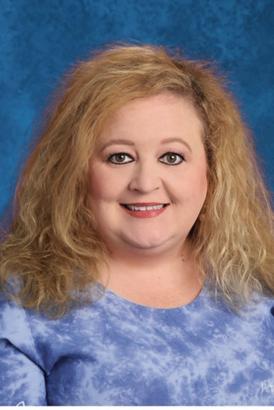
I have been doing a lot of research this summer about student materials. I want my students to have something that they can continue to use if we switch from in-person learning to online learning. So, I purchased the “My Music Book” series from West Music. (Item No. 867840) These worksheets contain sequential lessons based on American folksongs that correlate with “An American Methodology.” (Eisen, Ann and Lamar Robertson. An American Methodology: An Inclusive Approach to Musical Literacy. 2nd Ed. Lake Charles, Louisiana: Sneaky Snake Publications, LLC, 2010. Print). These worksheets focus on sequential skills beginning in first grade and continuing to fifth grade. Here are a few skills that are featured in each book:
“My First Grade Music Book” features beat, rhythm, ta, ti-ti, rest, 2-beat meter, and so-mi.
“My Second Grade Music Book” features ta-a, 4-beat meter, la, do, and re.
“My Third Grade Music Book” features the pentatonic scale, tiri-tiri, ti-tiri, tiri-ti, low la, low sol, and do pentatonic.
“My Fourth Grade Music Book” features syncopation, la pentatonic, dotted quarter notes, fa, half step, whole steps, B flat, and F major key signatures.
“My Fifth Grade Music Book” features re pentatonic, low ti, la pentachord, F#, key of G major, ti, whole rest, ti-tam, upbeat, dotted half note, 3-beat meter, and tim-ri.

Here are a few samples from “My First Grade Music Book.” The book includes a list of songs for each activity, “point and sing” pages, music notation writing, and staff paper to create their own songs. Students can color the title page of their music book and make it their own.
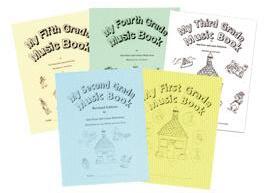
Students can color the cover page of their music book.
Students can practice writing on the staff. (sol-mi)
Students can use “Point and Sing” pages to practice beat.


Students can use the staff paper to create their own melodies and share with others.
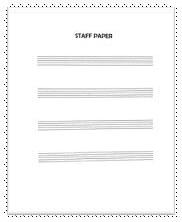

The worksheets in the books are reproducible and can easily be copied or scanned for a Promethean board. Many of the worksheets include practice with rhythm instruments or barred instruments. You can even customize your own book for each grade.
As we begin the most uncertain year of school, I would recommend that you join AMEA, the Alabama Chapter of AOSA, and SHAKE. These memberships can offer you amazing support and lesson ideas for your school year.
Best Wishes for a Great School Year!
Deanna Bell
General Music Reviews ala breve 17
No Child Left Behind in the Music Classroom:
A brief history of U.S. arts education legislation

As we continue to navigate our way through COVID-19 and what that means for our schools, it is important that we find ourselves equipped with the correct information to properly advocate for our arts classrooms. In order to do this, we must know the history of the United States arts legislation in public-schools. Without this information, it is nearly impossible to be able to represent ourselves and advocate for arts funding in the rapidly changing classroom. As a new school year approaches, now more than ever, we should know what legislation says about music education.
On January 8, 2002, former President George W. Bush signed the No Child Left Behind Act (NCLB) into law. This newly found education act focused heavily on standards and assessment. Subjects such as mathematics and reading were heavily stressed and brought to the forefront of schools’ curricula. With a testing centered system, many schools were labeled as “failing” under this mandate and placed under the magnifying glass of the federal eye. The goal was to move schools to a place of progress and felt that the place where change was to be made was in testing. For music educators, the question then became: Where do arts classes fit into this system?

The history of NCLB is extremely interesting when looking at how quickly states lost the power to assess their own students and determine how they define progress. This began in 1994 when The Goals 2000 was passed. This was an American education act with the plans to get the education system back on track by the year 2000. This act was the first implication of the arts as “core subjects” and really spearheaded the idea into NCLB. By 2002 when NCLB was passed into law, the arts were officially “core subjects”, but did not have the legislation to support it. Through many attempts to reauthorize NCLB, the Obama administration tried to tweak American assessment by giving control of scheduling and examination back to the individual states. Though it failed both in 2007 and 2011, the Obama administration began a redesign to give states flexibility in their own teaching. In 2013, NCLB was renewed by the House of Representatives with solely republican support, but in 2015 the Every Student Succeeds Act passes with legislation that allows music and arts education to be viewed as a valuable and important subjects to build into curriculum.
Standards were heavily affected when No Child Left Behind was passed in 2002. In general, NCLB put heavy emphasis on mathematics and reading. To many educators, this system appeared

to lack balance and neglected the importance of many other subjects. NCLB also changed the way we view assessment. The act attempted to streamline examinations to assess in what areas students were failing. Legislation required that all students be proficient in both reading and mathematics but were vague in what the term “proficient” means. This major change in testing angered many educators. Some educators even accused the federal system of changing testing because changing teaching was too difficult of a task. In my opinion, teaching is something that is adaptable and dependent on the individual teacher. A good teacher is able to adapt their individual teaching to meet the needs of their classroom while assessment is something that is much less flexible. Assessment is extremely valuable when collecting data, but when looking at existing data and looking for ways to make a change, the teaching is the first thing that needs to be assessed.
With music education being deemed a “core subject”, music educators were optimistic and looking forward to the possibilities of teaching under NCLB, but through weak legislation, little change was made to ensure students were being held to appropriate standards to assess their basic musical development. This caused a great debate about the possibility of a national music
18 August/September 2020
cNAfME
Jackson Vaughan, President, Alabama
assessment. While many were in favor of a streamlined music exam, others were worried about the lost qualities in a pen and paper exam. Standards and assessment of music were centered around progress and growth but did not examine important musical qualities such as communication, creativity, and critical thinking. Without these key aspects of music education, the student is merely learning to make pretty noise. This argument drove many music educators to despise NCLB and push for more control of their teaching standards and assessment in the classroom. All of this can simply be put as: music education cannot fit in the established paradigm that NCLB sets up in the American education system.
Funding was another aspect of No Child Left Behind that caused much grief in the music education classroom. Under NCLB, funding was based on adequate yearly progress. This means, that if a school does not meet certain standards during the school year, the school will begin to lose funding after one year of grace. This creates an extremely backward system where failing schools never receive the funds to improve. Instead, schools without the proper funding are found unable to adequately educate their students. While NCLB is often criticized as an underfunded mandate, the majority of funds were directed toward testing subjects such as mathematics and reading. With funds being funneled into math and reading, the arts were left to fend for themselves and come up with their own ways to keep their programs afloat. Already existing budget deficits caused arts education to be placed lower on the priority list than it already was. If a school did not meet its adequate yearly progress, there was no hope in their arts programs receiving any substantial funding. Music educators were placed in an interesting situation where they did not have the funds or time to support their classes and programs.
In 2015, thirteen years after the initial
passing of No Child Left Behind, the Every Student Succeeds Act (ESSA) passed into law. This law labeled music education as part of a “well-rounded” education. Unlike NCLB, ESSA had the legislation to support itself and began making changes to give states power within their own education systems. First, states had the ability to determine how they define progress. Since not every school and location across the country is the same, it was important for states to individually define what progress means and how it is measured and assessed in the public-school system. Second, states controlled educational money within their own systems. Funding was no longer directly put into core classes but was under direction of the states as to where it should go. With the states in control, money and time were placed into the hands of music educators. The Every Student Succeeds Act gave music educators flexibility to teach music in a creative facet without fear of streamlined assessment and standards.
The No Child Left Behind Act, while good in concept, impeded music educators from doing their jobs. Not only were they held to very strict federally mandated standards, but they were forced to face budget and scheduling problems head-on. Under the Every Student Succeeds Act, music educators are put in a much better position to teach and encourage creativity. As we all know, music education is a place within a school that fosters creativity; therefore, it cannot be strictly confined to checking off standard boxes. Especially as we find ourselves advocating our way through a global pandemic, it is pertinent that we understand the history of the United States public-school music education legislation. The more we know, the better equipped we are to advocate to local, state, and national officials to keep arts funding in our classrooms. Through ESSA, the arts are guaranteed a place in the public-school classroom and it is our duty as educators to keep it there.
Sources
Beveridge, T. (2009). No Child Left Behind and Fine Arts Classes. Arts Education Policy Review, 111(1), 4–7. doi: 10.1080/10632910903228090
Elpus, K. (2014). Evaluating the Effect of No Child Left Behind on U.S. Music Course Enrollments. Journal of Research in Music Education, 62(3), 215–233. doi: 10.1177/0022429414530759
Gilbert, A. D. (2016). The Framework for 21st Century Learning: A first-rate foundation for music education assessment and teacher evaluation. Arts Education Policy Review, 117(1), 13–18. doi: 10.1080/10632913.2014.966285
Kos, R. P. (2017). Music education and the well-rounded education provision of the Every Student Succeeds Act: A critical policy analysis. Arts Education Policy Review, 119(4), 204–216. doi: 10.1080/10632913.2017.1327383
Klein, A. (2018, October 25). No Child Left Behind Overview: Definitions, Requirements, Criticisms, and More. Retrieved from https://www.edweek.org/ew/sec tion/multimedia/no-child-leftbehind-overview-definitionsummary.html.
Team, U. (2019, October 17). The Difference Between the Every Student Succeeds Act and No Child Left Behind. Retrieved from
https://www.understood.org/en /school-learning/your-childsrights/basics-about-childsrights/the-difference-between-th e-every-student-succeeds-actand-no-child-left-behind.
ala breve 19
Terry Ownby- President, Alabama Bandmasters Association
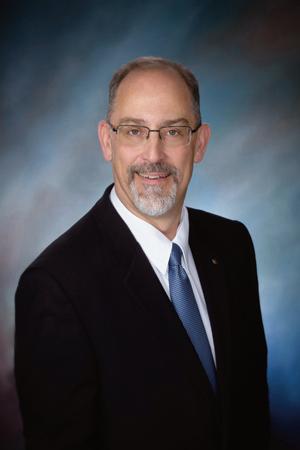
Stay Strong!
In the last 5 months, there have been so many opportunities for personal and professional growth during this very uncertain time. We’ve seen people and companies give of their time and resources to come together and help our programs and our students in ways that we have never seen. We have watched as many people have put on their thinking caps and have not given up, when that would have been easiest thing to do, but have blazed a trail using various kinds of technology to show us that we can do what we do in so many different ways, and that brings us all to today.
Today we are looking at the new school year and as I write this, there are still so many questions. I know that ALL of us want answers. We want them now. Actually, we wanted them five months ago. But the reality is that we can only take each moment, and
Things to think about in the days ahead:
1. Plan for Fall activities –
with the best information that we have, do the very best that we can for our students. The last three ABA PD sessions have been great. One on ways to fund our programs without selling anything, and two that were extremely motivational during a time when we need positive things to help propel us back to what we do as teachers. Last night, Jerell Horton made a great point that resonated with me again, one that I heard very early in my career, we need each other to get through the things that we are going through and we are better when we lean into and learn from others whose teaching styles, opinions, etc. may be different than ours. This helps us grow as a person and as an educator and will hopefully make us better for our students.
I wish I could tell you there will not be challenges in the days ahead, but there will be. I wish I could tell you that you will agree
with all the decisions that your local LEA makes, the AMEA leadership makes and the ABA leadership makes, but again we are human and this won’t be the case. But I do know that if we allow ourselves the ability to take a step back and soak in the reasoning behind decisions, even if we disagree with them, I bet we can then have the discussions that need to take place to help pave the way for decisions in the future. Also, to help these decisions before they are made, we need to be advocates for music education that our administration and local school districts turn to for questions about the arts. This takes time to cultivate but is well worth the effort for you to put into being the calm presence that has the well thought through plan, that is fact driven. If we want to have our seat at the table, it takes ALL OF US cultivating the relationship at the local level being the go to person for the arts.
a. Plan for traditional with modifications, a hybrid option and a possible virtual option
i. Remember, if you fail to plan you have planned to fail!!!!
2. Start now planning Concert Band literature your band for the next academic year – and how you might have to do Virtual concerts and live stream these or record these and make them available to parents
3. It’s not too late to recruit – put together a video of your leadership students encouraging younger students to be in band –ASSUME THAT ALL YOUR UPCOMING STUDENTS ARE GOING TO BE IN BAND AND GO AFTER THEM!!!!!!!!!
a. Go back and watch the Peter Boonshaft PD session and the Jerrell Horton PD session for some great ideas here
4. Use this time to market your program in a positive way!!!
5. Look at your finances and how you will manage them in the Fall since most of us missed a fundraiser this Spring
Upcoming ABA events
Solo and Ensemble - Our bylaws allow for Solo and Ensemble to occur anytime from October through May. Each district has been encouraged to offer two solo and ensemble events next school year for our students. This is something for each district to discuss and see what works best for your district.
AMEA 2021 - All legislation that was going to be voted on at the All State festival (2020), will be moved to the 2021 AMEA conference so that the membership will have the opportunity to discuss the legislation

before we vote on the legislation.
AMEA has a Music Teaching Resource page at myamea.us where we can all go to find resources to help during this time. You can also place your ideas and resources here to help us build this site. Also, remember be proactive and positive as we move forward. The future of our programs will depend upon how we handle this time with our students and their families.
Stay focused on what really matters, and that’s the students!!! How can we do what we do for our students in whatever form teaching will take this Fall. Face to Face,
Hybrid, A and B days, Virtual. How can we give them the absolute BEST experience whatever the platform learning takes this Fall?
Stay strong!!
This is your association. Let us all strive to make it better so that we can serve the students and the bands in our state better. We are ABA and together we CAN do great things!!
Terry
20 August/September 2020
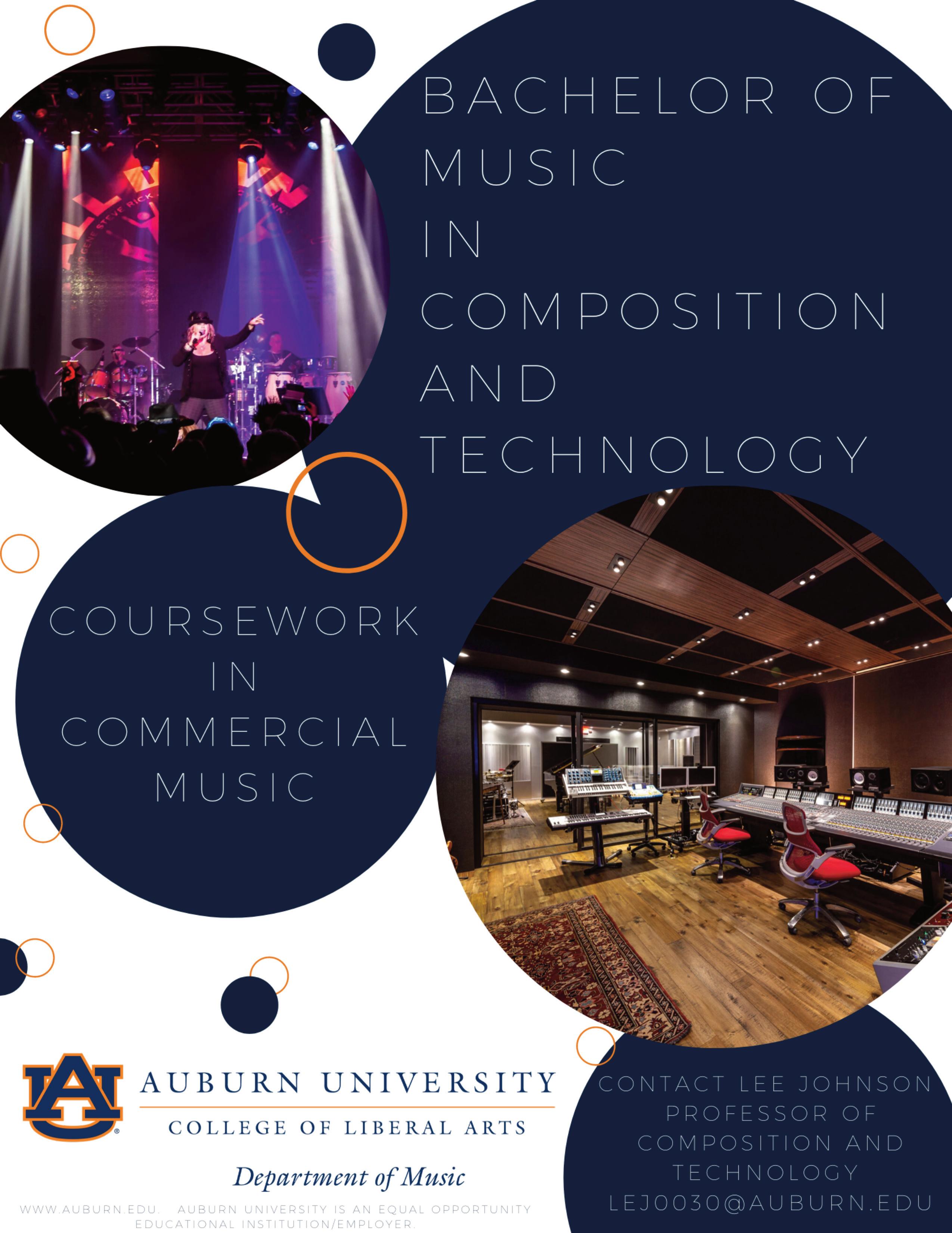
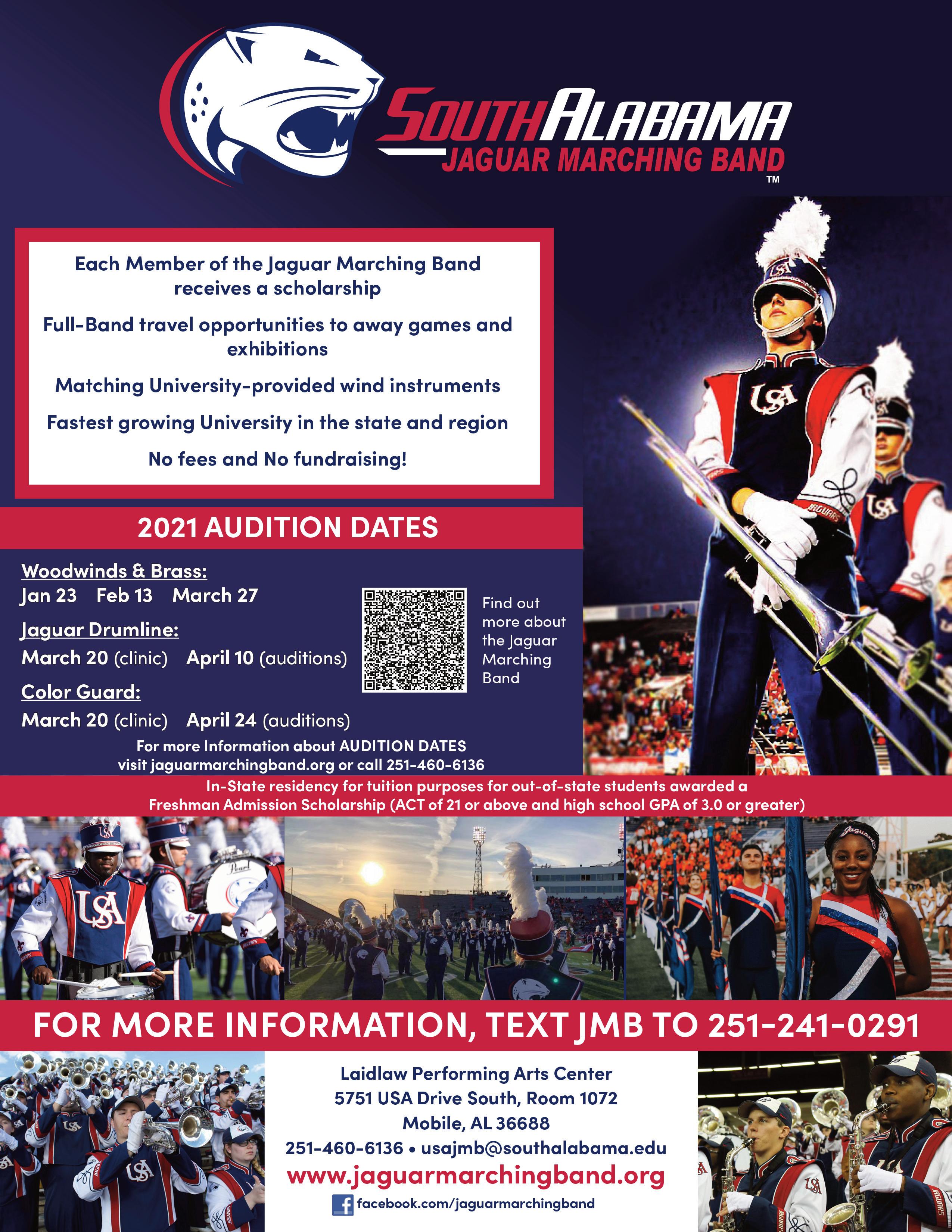
Selected Extended Choral Works by Black Composers
As conductors seek to include more choral compositions by black composers in their repertoire, it is not uncommon to gravitate toward exciting spiritual arrangements or inspiring gospel compositions. It is equally exciting to reach back to some choral gems by the earlier black composers that are written in a non-idiomatic fashion. This article is intended to encourage the director to give consideration to including multi movement works by black composers. Trailblazers like William Grant Still, Margaret Bonds, Undine Smith Moore, and many others paved the way many years ago when professional opportunities and national exposure were much more difficult for a person of color to achieve.
While there are several reasons why it might not be possible to program any of these works during the COVID-19 era, they can certainly be incorporated into a lesson plan and/or serve as major points of discussion, study, literature review, research, listening, etc. The graduate students who were enrolled in my African American Choral Music course this summer are the inspiration behind the focus of this article. Again, this is a selected list of only six works, and they are a very small representation of what you may discover from your own search for nonidiomatic music by black composers from decades or centuries past. It is my hope that you will be inspired to dig further into some of the many other extended works by black composers, including additional choral music by these same composers.
Requiem in D minor (Rio de Janeiro, 1816)
José Maurício Nunes Garcia (1767-1830)
For SATB chorus, soloists, and orchestra
Associated Music Publishers also available on CPDL

Duration: Approximately 35 minutes
Nunes Garcia was an Afro-Brazilian composer who was also a priest. Because of his close association with the Catholic Church, the vast majority of his works are sacred. They include motets, anthems, cantatas, masses, and other sacred compositions. His style resembles that of Mozart and other classical composers which makes this requiem mass very appealing to present-day choruses and orchestras.
by William Powell
Hiawatha’s Wedding Feast
Samuel Coleridge-Taylor (1875-1912)
words by H.W. Longfellow
a cantata for tenor solo, SATB chorus, and orchestra
Novello & Company Ltd.
Duration: approximately 32 minutes
An Afro-British composer of mixed birth, Coleridge-Taylor enjoyed great success as a composer in England and in the United States. During his time, Hiawatha was performed annually and was rivaled only by performances of Mendelssohn’s Elijah to Handel’s Messiah. Coleridge-Taylor was often referred to as the “African Mahler” or the “Black Mahler.”
The Ordering of Moses
R. Nathaniel Dett (1882-1943)
an oratorio for soli, chorus, and orchestra
Text from Scripture and folk lore
Alfred Music Publishing
Duration: approximately one hour
Dett was born in Canada and taught at Hampton Institute where he founded the Hampton Institute Choir and other musical establishments. A prolific composer of piano works and other mediums, Dett was the first composer of African descent whose major work performed for a national radio broadcast. Often mistaken for a spiritual, “Listen to the Lambs,” which is probably his best known choral work, was actually composed as a ‘religious characteristic in the form of an anthem.’
The Ballad of the Brown King
Margaret Bonds (1913-1972)
text by Langston Hughes (1902-1967)
a Christmas Cantata for SATB chorus, piano (orchestration available), and soloists
Sam Fox Publishing / Jubilate Music Group
Duration: Approximately 25:00
Margaret Bonds published several works for other mediums such as solo piano, voice and piano, chamber ensemble, and others. Her choral works, some of which are out of print, are very singable, and they demonstrate her skill as a composer who understood the voice and its interaction with piano. One piece in particular is The Negro Speaks of Rivers based upon the poem by
Langston Hughes whose poetry she used quite often.
Scenes from the Life of a Martyr (to the memory of Martin Luther King, Jr.) Undine Smith Moore (1904-1989)
A 16-part oratorio for SATB chorus, soprano, mezzo, and tenor soloists, narrator, and orchestra
Theodore Presser Company
Duration: approximately 40 minutes
Having taught high school in her earlier career where she composed works for her chorus to compensate for the lack of funds to purchase music, Undine Smith Moore later became a music professor at Virginia State University. Other than Scenes, she is perhaps best known for her landmark setting of the spiritual “Daniel, Daniel, Servant of the Lord,” and her choral composition “Striving After God.”
And they lynched him on a tree by William Grant Still (1895-1978)
libretto by Katherine Garrison Chapin (1890-1977)
an oratorio for male speaker, mezzo-soprano soloist, black chorus, white chorus, and orchestra (or piano)
William Grant Still Music
Duration: 17:24
Still is regarded as the “Dean of African American composers,” considering that he was the first black composer to have a work performed by a major orchestra, the first to conduct a major orchestra, and the first to have an opera performed by a major company. Without question, his oratorio about lynching was not without controversy. Regarding the performing forces of the rarely-performed And they lynched him on a tree, the white chorus represents the mob, the black chorus represents the community that witnessed and reacted to the lynching, and the mezzo represents the mother of the man who was lynched. It is a deeply moving and emotionally disturbing composition, but one that provokes thought and encourages change.
William Powell Director of Choral Activities
 Auburn University
Auburn University
ala breve 23
Remembering Edd Jones
Chapter President, and Jazz Educators Association Alabama Chapter President. In 1997, he joined his high school band director, Truman Welch, and his college band director, Colonel Carlton K. Butler, as a member of the Alabama Bandmasters Hall of Fame. Dr. Jones was a founding member of Shoals Area Big Band in 1979, along with Dr. Lyman Mitchell, Sr., Mr. Edsel Holden, Dr. Jimmy Simpson, Mr. George Ingram, Mr. Charles Wilson, Mr. Charles Rose, Mr. Harvey Thompson, Dr. Bob Garfrerick, Mr. Tom Risher, Mr. Bobby Terry, and Mr. Sonny Thompson, along with many other local musicians.
From Nancy Frith...
Dr. Edd Jones was a teacher of music and an advocate for music education. Dr. Jones’ appreciation and talent for music was birthed at Elmore County High School in Eclectic, AL, under the instruction of his mentor and friend, Mr. Truman Welch. Edd was a five time all-state trumpet player during high school and graduated as a member of the class of 1955. Upon graduation, he enrolled at the University of Alabama where he was a member of the Million Dollar Band under the direction of Colonel Carlton K. Butler. While at the University of Alabama, Edd was a trumpeter, member, and leader of the Alabama Cavaliers. He was also a member of Pi Kappa Phi fraternity. In 1962 he established the Edd Jones Orchestra, which he led and performed with until the summer of 2019. Many ballroom dancers throughout the Southeast and Midwest have appreciated and enjoyed the music of the Edd Jones Orchestra (also known as the Little Big Band).
After graduating with his Bachelor of Science and Master of Arts in music education from the University of Alabama, Edd taught at Opelika High School for two
years before moving home to Elmore County High School where he taught for six years with his mentor, Mr. Truman Welch. This is where Edd established the studio lab band concept that is still in existence today. After teaching at Elmore County, he moved his family to Hattiesburg, MS, where he completed his doctoral coursework to earn his Ph.D. and served as an assistant marching band director under Dr. Ray Young at the University of Southern Mississippi.
In the fall of 1973, Dr. Jones was chosen as the Director of Bands at Livingston University (now the University of West Alabama). He taught at Livingston for five years before accepting the Director of Bands position at the University of North Alabama. Dr. Jones taught the trumpet students and served as the Band Director at UNA for 21 years before retiring in 2000. Upon his retirement from UNA, he was bestowed the title of Professor Emeritus.
Among his many accomplishments, Dr. Jones served as President of the Alabama Bandmasters Association, Phi Beta Mu International Band Directors Fraternity Rho
I came from a super small school in a tiny little town (Dr. Jones said you could dump a body in Winston Co and it would never be found). I had a great high school director in Ken Williams. He prepared this small-town girl to go to college and play in a college band. This was my only ticket to college so I took it. In my scholarship audition, I was scared to death. Florence was the big city after all. I barely spoke to Dr. Jones. I was so nervous. I suppose I did ok. Got all my tuition paid. Otherwise, I would have gone back to Arley. I had no clue what I wanted to do but I took lessons with Dr. Jones. He seemed nice. I wasn’t a music major at the time, but why not. I mean, me? A teacher? No way. Through making friends in band, I got involved with Tau Beta Sigma and also started working for Dr. Jones in his office through the university. I helped with the music and the uniforms. I felt like he kind of took me under his wing. I sat in his office and he would talk to me, tell me stories about his small town and how he got to college. I feel like we had a connection that way. The way he talked about his high school and college directors was the same way I felt about mine. Slowly and surely he brought me out of my shell. I know some of you may find it hard to believe I was ever in a shell but I definitely was. Once I was out, there was no going back. I loved coming back to Florence and spending time with Dr. Jones, which I did frequently. He was a HUGE part of my life and that hole will not be filled now that he is gone. What a tremendous legacy Dr. Lloyd Edward Jones II has left the UNA band program. His son took the baton years ago and is carrying on
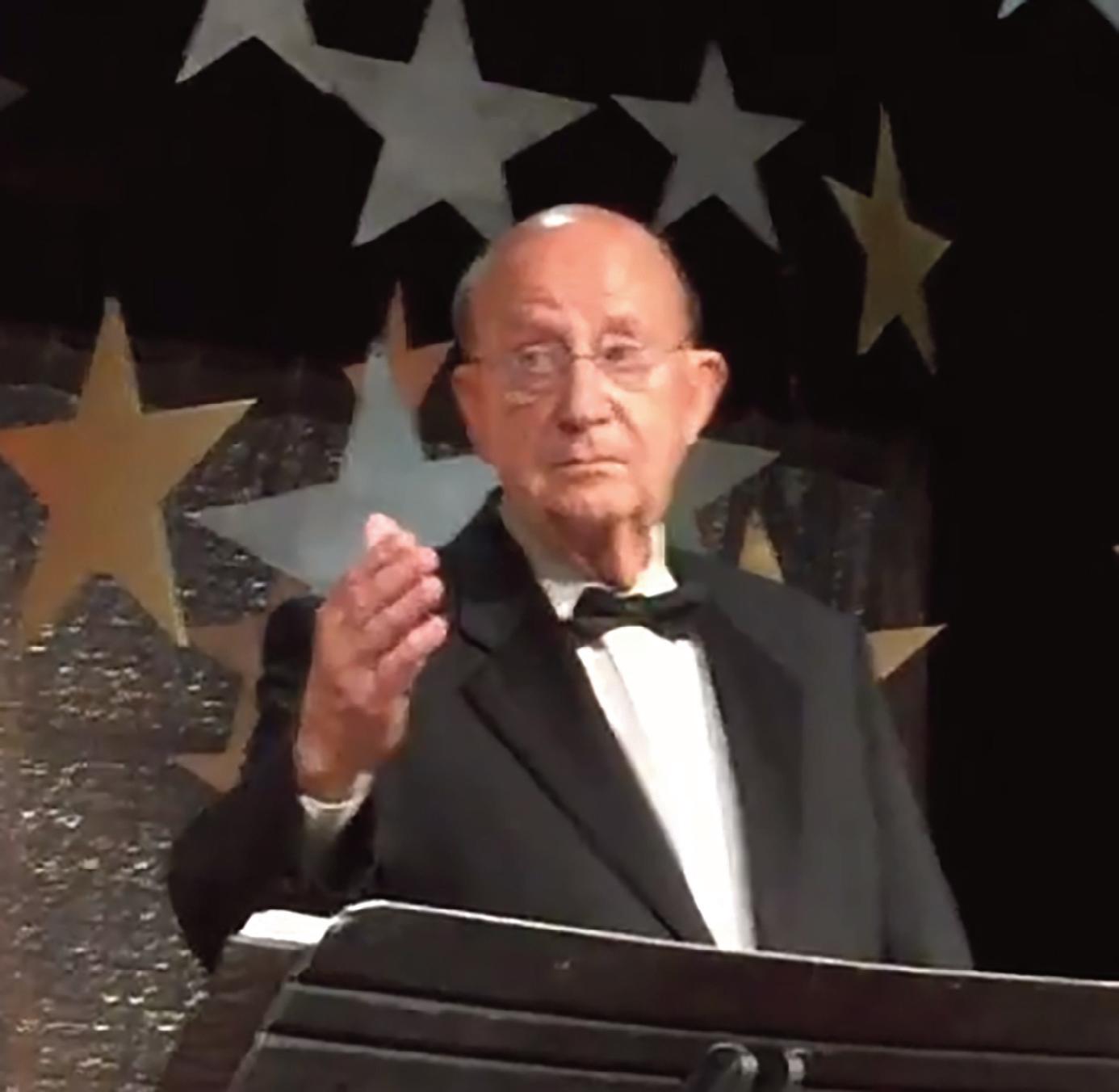
24 August/September 2020
the tradition!!! I hope the University of North Alabama know what treasures they have with the Jones family. We are all proud alumni because of it.
From Micheal Holmes...
When Dr. Jones came to UNA in the summer of 1978 band members were both anxious and excited. During my three years with Dr. Jones much of the excellence I had experienced in the Minor High School Band was reinforced. The UNA band immediately began to work harder in trying to live up to Dr. Jones's high expectations and demands. It didn't matter what role you played in the band the expectations were the same for everyone. Some wouldn't make it back for year two, but those of us that appreciated how quickly the band began to gain respect and recognition were all in. I enjoyed the opportunity to get to know Dr. Jones on a personal basis as well. It was rare to walk by his office in the evenings and not see him sitting at his desk. His door was always open. Especially when Jeff Vaughn and I would walk in with a plate full of food that we had just cooked. He asked me on several occasions "how do you get these biscuits so soft?" I am proud to say that I am one of the many band directors that came out of the UNA Band program during Dr. Jones's tenure. As a result there are thousands of middle and high school band members that know what to do when someone tells them to play "do dot-do dotdootin do dot! He will be missed. He was the UNA Band!
From Missy Lindley...
Super blessed to have learned how to be a band director from one of the best. Dr. Jones was a perfectionist in every way, demanding our best at all times. I find myself doing or saying things he would use in rehearsal in my own classroom daily. The best story I have to share is when I accepted a position as a Lionette and gave up my full scholarship for a semester. I explained that I loved to dance but more than anything I wanted the college danceline experience since I was going to be a band director. Dr. Jones looked at me and said “Well Missy, I can understand that and that’s pretty smart. Your Momma and Daddy are gonna kill you for giving up your scholarship but it’ll be good experience for the future.” Little did I know I would go on to work with dancelines my entire career! Im so thankful to Dr. Jones for being supportive even when he didn’t really agree with our decisions!
From Roger Mills...
I was first introduced to Edd through an oncampus visit at Livingston University (UWA) in 1975. He treated my parents and I to a hearty lunch at the Livingston Inn restaurant. Edd had the red hots! I liked him from the start. I learned more about life in those years under him than any other time in school. He worked us like government mules but it always paid off in the making of some incredible music of all kinds. Edd could clean a band better than anyone I’ve ever known. Although I didn’t have Dr Jones but for 2 years at Livingston, he left an indelible mark, a positive role model, setting the bar so high you had to push and work in a way a lot of us had never done before. During my short time as a band director, I used to call Edd to pick his brain and to ask for advice but most of all just to talk to an old friend. His work ethic was incredible and the results showed in his bands but most of all in the kids he taught. The Alabama band world has lost, in my eyes, a giant of a man. Rest In Peace my friend. Gone but never forgotten.
From David Raney...
With no question, Dr. Jones is the reason I had the opportunity and desire to be a band director. His relentless musical demands once seemed impossible to achieve; however, for his students, those demands were the standard. I have never met a person that shared the same level of hard work and commitment to the music profession as Dr. Edd Jones.
From Regina Raney...
It was my first day of band camp as a freshman at the University of North Alabama (UNA), when I realized that Dr. Jones had extremely high expectations for the band. The rehearsal began with few introductions and the down beat was given for the warmup. I remember thinking to myself that we would never learn the music if he was going to spend so much time on articulations, EXACT releases and balance on the first note of the warmup. Finally after the lengthy warmup, Dr. Jones called up the fight song. Yay, we were finally going to get to the music, but little did I know he would spend the rest of the rehearsal demanding musical perfection like I had never seen before. He didn't leave room for improvement during rehearsals. You didn't move on, unless it was exactly the style he desired. Little did I know the amount of musicianship and teaching strategies I would gain from the first night of band camp. I will always be grateful for my time under Dr.
Jones' leadership.
From Pat Stegall...
Dr. Edd Jones set the standard on how to clean a band! His knowledge of the history of bands in Alabama was incredible! I remember our excitement in 1978 when we learned he was coming to UNA to be the band director. I remember moving him and his family into their home in Florence. I remember Lloyd Jones when he was a little kid. I remember the fear Dr. Jones placed on us that first night at band camp. I remember how hard it was to get a compliment from him, but when you did...it was well earned and you knew he meant it. I remember the performance at MTSU when we received a standing ovation from their crowd and thinking how much of a difference he had brought to our program. I remember him sleeping at senior recitals and then telling the performers what a great job they had done. Yes, I remember his speeches, too. Mostly I remember the huge influence he made on so many of us that became band directors. I always had his voice in the background when I rehearsed my bands and paid attention to what he said. Thank you, Dr. Jones for your mentorship and delightful sense of humor that kept your high standards in balance. RIP sir. You made a difference!!
From Rebecca (Becky) Warren...
I have been blessed to have wonderful teachers and there have been none better than Dr. Edd Jones. We both came to UNA in 1978. I was amazed that within just a day or two he knew the name of every student, where they were from, probably what their parents did, and certainly who their high school director was. It did not take long to know exactly what his expectations were. The goals he had for each of us was simplebecome the very best you can be and settle for nothing less. Dr. Jones knew what all great directors knew- fundamentals are the foundation upon which all great band programs are built. He knew how to get that “band sound” that we all strive for. The greatest compliment that any former student can get is to be told that our band sounds like an “Edd Jones/UNA” band. Dr. Jones leaves a legacy of turning “confound, lollygagging, quasi-music majors” into dedicated and successful teachers. His influence and legacy will live on for generations of bands to come. Dr. Jones, THANK YOU for helping to make me the Band Director I am today! Roar Lions!
ala breve 25
What Can I Do for You? Reflections on a Special Friend – Dr. John M. Long
band director at Foley High School. I was the conductor for the concert band and we travelled to Troy to participate in District Contest (MPA now). Needless to say, I was terrified. Were we “ready”? Did I remember the music? Did the students remember to bring their instruments? Supplies? What would the adjudicators say about the performance?
Dr. Long was on the adjudicator panel that year. I had heard of Dr. Long, he was a legend, but I had never met him. What would HE think of the ensemble? What would Dr. Long say about our performance?
As we prepared to leave following our performance, Dr. Long came down from the balcony and introduced himself. That was the first time I talked to Dr. Long and it made a tremendous impact on my life and career! He took the time to talk to a firstyear band director and make me feel welcome and supported. His kindness and genuine care remained constant throughout my career.
For the song of America is not finished; the last notes have not been played. In that spirit, in that cause, now and always, let us lift every voice…
--- Jon Meacham
Reflections on a Special Friend
Dr. Larry Blocher, Dean of the College of Communication and Fine Arts and Director of the John M. Long School of Music, Troy University
His name was Dr. John M. Long. Johnny Long to his friends – and he had many friends. He had a distinguished music teaching career. His professional accomplishments in music are welldocumented. But the story of Dr. Long does not stop there. Dr. Long mastered what Hal Urban, in his book, Life’s Greatest Lessons, calls a “powerful skill” – the ability to affirm others. Urban writes:
Affirm, in my opinion, is the most powerful word in our language. It means looking for and finding good in people. It means building people up and encouraging them.
It means finding reasons for praise and applause… Most of all, it gives people reasons to celebrate… Sincere praise brings out the best in us.
Dr. Long had a rare gift for recognizing and bringing out the best in people. I have asked some of my favorite colleagues to share their special memories of Dr. Long, and how he made a difference in each of their lives. Their thoughts follow.
Dr. Long, YOU Were the Best!
Dr. Carla Gallahan, Associate Dean of the College of Communication and Fine Arts and Associate Director of the John M. Long School of Music, Troy University
As I reflect on the many memories of Dr. Long, numerous stories, conversations, concerts, and meetings come to mind. His mentorship and kindness were a guiding force throughout my career.
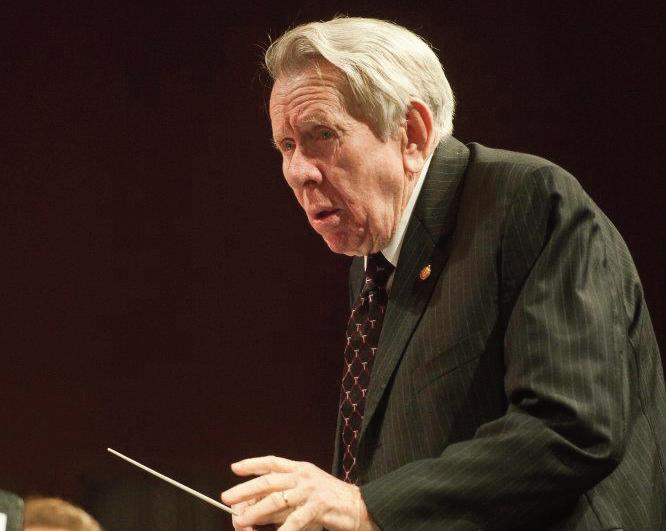
Currently preparing for my 34th year of teaching, I think back to the first time I met Dr. Long. February 20, 1988. It was my first-year teaching and I was the assistant
Dr. Long had a way of making everyone around him feel needed, a way of finding the positive in what you were doing, and knowing that if needed, he was always there to help you along the way.
The answer to the question Dr. Long presented to me and countless others “What can I do for you?” is simple. Dr. Long, you did it! Your model of unwavering support and kindness provided generations of students and educators the knowledge and drive to strive for excellence in our profession. I am forever grateful for that first introduction and our continued friendship.
Dr. Long, YOU were the best!
From Popeyes to C Tubas; The Teacher was Always the Student
Dr. Mark Walker, Director of Bands, Troy University
Writing about Dr. John M. Long is not an easy thing to do. There are innumerable wellknown, often repeated, beloved stories and
26 August/September 2020
Larry Blocher
Carla Gallahan
Peter Howard
Robert W. Smith
Mark Walker
anecdotes about him that are told and retold by his legions of former students, colleagues, and friends. That he gave of himself to others selflessly is a given; that he built the “Sound of the South” band into national prominence is a given; that he was the president of everything (as he was fond of reminding me whenever we talked) goes without saying (unless he was saying it). Johnny Long wanted to be remembered as a teacher. But he was more than a teacher – he was a friend to everyone, no matter who they were or where they came from. He was a friend to those who were not friendly to him. A devout Christian, he took seriously Jesus’ command to love his neighbor and to help those who needed help, to forgive, and to turn the other cheek. His loyalty was absolute and unconditional, as was his love for his students and friends, and of Troy University.
I came to Troy State University, as it was known then, in the summer of 2002 as the assistant band director and low brass instructor. I had heard of Troy State and Johnny Long, but I wasn’t familiar with specifics. I did know that the “Sound of the South” was a great band and Johnny Long was important, but I did not know how important. I grew up in Arkansas, went to college in Tennessee and Illinois and was a high school band director in Texas. Dr. Long’s name came up in all of those places, but I had never met him personally.
Our first meeting was on a Sunday afternoon when he and Mary Lynn took my wife, Jessica, and our daughter Emily, and me to lunch at the Holiday Inn in Troy. I remember that we spent most of the time telling Dr. and Mrs. Long about our life to that point, detailing where we grew up, how we met, where we went to school, and most importantly who our band directors were. He talked little about himself at that point, and when he did, Mrs. Long would put her hand on his hand and say, with perfect Southern Gentility “Now John, they don’t want to hear all that.” At that moment, the subject would change. It was obvious that Dr. and Mrs. Long were devoted to each other and had a very, very special bond. They were, and are, an example to Jessica and me about what a long and devoted marriage can be. We both said at that time that we wanted to be like the Longs when we grew up.
While I was not a formal student of Dr. Long, in the sense that I wasn’t a student at
Troy, I am most definitely a student of Dr. Long. I regard him as one of my teachers and mentors. I sat in his “class” at his house, in his office, on an airplane flying to Hawaii to judge marching bands with him, in my office, and at Popeyes chicken. I have never known, and probably will never again know, any person with as much energy and a love of people and of band.
Before Dr. Long’s health problems became too much for him to travel, he still came to his office at Troy University and attended clinics and rehearsals at our SEUS clinic and at AMEA. He supported everyone. I asked him one time why he still attended clinics –this was when he was in his mid-80s and could still get around pretty well. I thought I knew the answer – that he wanted to support his friends. Instead, he said, “I still have more to learn about band.” That was a singular moment in my life – to hear those words. They resonated in my head and heart like a giant bell. Here was a towering figure –one that had “done it all” in many respects –and he wasn’t finished learning. He knew he still had more to learn and more to do. When I am tired and down, I remember that moment, and my resolve comes back. I’m sure it happened, but Dr. Long never seemed to be down or troubled by anything. If there was a problem, a setback, an issue, or an aggravation, he just rolled up his sleeves and pushed forward. I never saw him complain. He would just keep moving forward, or through, or around, or over, or under, to get to where he needed to go. And, he did it while taking people with him, pushing them out of the nest at the right time, and supporting them as they took their own flight.
The last few years of Dr. Long’s life, before his last major health issue, I used to take him to lunch at Popeyes, which was his favorite place to eat. I cherished those times and would try to take him at least twice a month (although we didn’t always make it that often). At one of those first lunches, Dr. Long told me what I was going to eat, and then he ordered it. The poor young lady at the register had no idea what Dr. Long was saying, so I “translated.” She was clearly relieved. Then, to pay the bill, he took out a pocketful of coins and tossed them on the counter along with a $100 bill and said to the young lady, “take it out of that.” She was really confused by the whole encounter, so I scooped up the coins and she was able to take the cash and return the change. I got Dr. Long seated, retrieved our food and
drinks, sat down, and gave him his money. The first thing he said to me after we were settled was, “Why do you like C tubas in the Symphony Band? Explain to me why they’re better – I need to know.” He was 90 years old and still learning. The teacher was the eternal student. I can’t think of a better legacy. Rest well, Johnny Long.
Sixty Years Later; Don’t Ever Stop
Dr. Peter Howard, Chair and Professor, World Language and Cultures, Troy University
I was a member of Dr. Johnny Long’s band at Robert E. Lee High School in Montgomery from 1960-63. As a faculty member at Troy University since 1974, I served under Dr. Long for many years while he was Director of Bands, Dean of the College of Arts and Sciences, Dean of the School of Fine Arts, and during his retirement as Founder and Director of the Southeast Alabama Community Band.
Having spent the past sixty years working closely with Dr. Long, I have numerous stories, so many in fact that it’s very hard to decide what to share here. I know of countless things he has done for people without their ever realizing it, but these are stories that will never be told. Perhaps Dr. Long’s greatest gift as a teacher was his ability to affirm sincerely the personal worth of each of his thousands of students.
Identifying the single moment when Dr. Long transformed my life, I remember very clearly a Saturday in December of 1960 when I was a sophomore at Lee High School. I was a member of the band and was also playing on the basketball team. I was unaware, however, that on that particular day I was going to make an immediate and important decision.
The basketball team was playing in a tournament, and our games conflicted with the band’s rehearsal schedule for the BlueGray Football Game. I was at school that day, but I was not playing in the rehearsal.
Near the door of the band room was an old metal garbage can with a crumpled lid. Whenever graduates of the band returned from college to visit, they always sat on that garbage can to listen to the band, and Dr. Long would always stop the rehearsal to spend several minutes extolling their virtues. We already knew them, having often heard his many stories about them as exemplary
ala breve 27
band members.
On that particular day, I strolled down to the band room and perched myself on the hallowed garbage can, as if I were somebody important and special. He looked over and noticed me sitting there. The rehearsal stopped immediately, and I really don’t recall much after that. What I do remember vividly, however, was the entire room spinning around me. I was being told in no uncertain terms that if I wanted to be a member of his band, I would get my instrument and sit down in the trumpet section where I belonged. I immediately ran two miles all the way home, grabbed my trumpet, and ran back to school just in time for the end of the rehearsal. I eventually became the first-chair trumpet, and in my senior year I was elected captain of the band. Now I may have given up basketball many years ago, but I have never stopped playing in the band.
Some sixty years later, Johnny Long was still our teacher, and many of us were still members of his band. Our hair may now be gray or gone, our gait may have gotten a bit slower, but we continued to play very challenging music and he continued to direct us. Dr. Long exemplified and taught us an important lesson: “Do as much as you can, as well as you can, for as long as you can. You may be forced someday to slow down, but don’t ever stop.”
Reopen, Reflect and Resonate
Robert W. Smith, Coordinator of Music Industry and Professor of Music, Troy University
As I continue my life journey and reflect on the people and events that helped me to get to this time and place, I am reminded that all humans are truly students for life. As students, we experience and learn the lessons of those incredible teachers that inspire us to heights we could not have imagined in our early years. No matter who taught those lessons or when those concepts registered, we must be bold enough to not only learn the lesson but to reopen the experience years later. As I reopen the formative experiences of my life, I am amazed at the impact that one teacher had on my entire life both directly and indirectly.
My formal musical education began in Daleville, AL in 1963. I was a precocious five-year-old boy that had fallen in love with music. I had experienced the glorious sounds of the piano through my mother and
grandmother and I was determined to play. In my hometown of Daleville, a gifted pianist by the name of Joan Marchman was teaching private piano. Although my mother had contacted her earlier about my interest in music, Ms. Marchman agreed to accept me into her piano studio when I had reached the age of five. I still remember that day as I stood on her front porch and knocked on the door. Little did I know that day would be the beginning of my musical career.
Through those early lessons, Ms. Marchman not only taught piano technique, but she also opened up the world of music through indepth theory lessons. Most important were her assignments and encouragement to write my own melodies, my own music that allowed me to express myself through this amazing universal language. During that time, Ms. Marchman connected me with her alma mater, a small college in Troy, AL, that was to be my musical home for most of my life.
Not many years later, and after experiencing music in metaphoric “black and white”, my world turned to color as I joined the band program at Daleville Elementary School. Through the band program, I fell in love with the tone colors and textures that were possible in larger ensembles. Once again, I was connected with that small college in Troy, AL, that was the center for band activity in our corner of the world. The Troy State College Band was known throughout the region as the “Sound of The South”. The band was under the direction of a charismatic director by the name of John M. Long. From my very young perspective, watching and hearing Dr. Long perform with the Troy State Band was an indescribable experience. He was truly “larger than life” on the podium and the sound was something I had never experienced. It did not take long for me to realize that my teachers, those working with me every day in my life’s most impactful moments, were all students of Troy State College and John M. Long.
Through my teachers and my mother, I began to regularly attend concerts at Troy State University (formerly Troy State College). During the fall season, I went to football games to hear and experience “that sound”. I clearly remember the day I was personally introduced to Dr. Long. I was only 12 years old. He looked at me with those piercing, yet very caring eyes and extended his hand to shake mine. That handshake was another turning point in my
life as I very confidently stated, “Dr. Long, I’m going to play in your band one day.” He smiled and said, “I know you will and you’re going to be my first trumpet player!”
Through my elementary, middle and high school years, every single band director/teacher that I experienced was a student from Troy State and Dr. John M. Long. Of special note were my “Ski lessons”. Dr. Clifford M. Winter, known to his friends as Ski, became the band director at Daleville HS during my middle school years. He and his wife Suzanne were both recent graduates of Troy State University and Dr. Long’s band program. I still remember the day that I suggested our band play an arrangement of “Wabash Cannonball” patterned after the incredible Jim Mahaffey chart we had heard that weekend in Troy. Mr. Winter looked at me and simply said, “Why don’t you write it?” That “Ski lesson” in creativity, along with many others, opened up my life as a composer/arranger for band. As I reopen those early writing lessons and experiences, I cannot help but realize that Dr. John M. Long was there guiding and directing the creation of that inspirational arrangement that literally changed the direction of my life.
During my high school years, Dr. Long introduced me to a composer that he had recently asked to join the faculty at Troy State University. As I shook the hand of Dr. Paul Yoder, I had no idea the impact that meeting would have on my life. As I prepared to go to college, I knew that I wanted to be a composer/arranger and I wanted to play in Dr. Long’s band. Dr. Yoder reviewed my arrangement scores from my high school years and simply stated, “Robert….You are going to be able to do this. You can start writing for the proverbial ivory tower or you can start writing for educational musical groups. I suggest you do the latter and grow with your music as you learn to write for the various grade levels.” I took that advice and am eternally gratefully to Dr. Yoder for his teaching and wisdom. Yet again, Dr. John M. Long was there, directing and guiding me along a path that would become my life’s work.
As I reopen the lessons of the past, I remember the thrill of playing trumpet in the “Sound of The South”. Dr. Long was correct. I was in his band and I did become his first trumpet player. The lessons we all learned from him each and every day have resonated through the years. Former students still share stories of “remember
28 August/September 2020
when” as we get together and talk about our band days. However, two very short Dr. Long lessons are particularly important to me.
I remember the day I was in his office and he looked at me and said, “Robert, are you with me?” I replied, “Of course Dr. Long. I’m with you!” He replied, “Are you with me even when I’m wrong?” I have thought about that lesson so many times over the years and realized that in life, leaders must make hard decisions. Those leaders must make those difficult decisions with the best information and context they can gather at that time. Sometimes, those decisions do not work out. However, those decisions were honest, thoughtful and kept the group moving forward.
I also remember the day at the end of the fall football season in 1978. It was the “final exam” for the band class. We arrived at the prescribed exam time of 8 am and found the band hall to set up for a marching band recording session. We were all a bit surprised. Dr. Long stepped on the podium and let us know we would be recording a few songs for the new album “The Sound’s in Town”. The first chart he called was “Satin Doll”, a marching band arrangement in a big band style. I had the trumpet solo in that particular arrangement and the range was on the high side with a high Eb concert. I had not warmed up before the final exam and, of course, chipped the high Eb concert on the solo. Dr. Long stopped the band and asked me why I missed the note. I proceeded to make excuses about how I wasn’t ready or warmed up. Dr. Long looked at me with those piercing eyes and said in no uncertain terms, “Robert, I don’t care if it is 8 am in the morning or 8 pm in the evening, you must always be ready to perform. The world is not going to wait on you to warm up!” I simply replied, “Yes sir.” Without any delay, he kicked off the recording again. With no warm-up and youthful vinegar flowing through my veins, I played the solo again and nailed the high Eb. That moment is forever etched in sonic bliss for me as remember that incredibly valuable life lesson that I have passed on over the decades.
Simply stated, teachers create environments for their students to grow and be successful. Dr. John M. Long created an environment for countless thousands of students to grow not just as musicians, but as human beings and leaders. His relationship with me continues to this day, even after he has been

laid to rest on the campus of Troy University. In the words of the classic song, “I’m just a living legacy of the leader of the band.”
Close Encounters of a Special Kind
Dr. Larry Blocher
My family and I moved to Troy, Alabama in July of 2005. On one of my first days in the School of Music office that summer, a charter bus pulled up across the street. As I looked out the window to see who was getting off the bus, I saw an older gentleman dressed in a suit running across campus towards the bus. Now seeing someone in a suit running towards a charter bus in Alabama in July (I had recently learned “first-hand” what Alabama in July was like), especially on a relatively empty college campus in the late afternoon definitely caught my attention. I remember asking my secretary, “Who is that gentleman and who is he shaking hands with?” “That’s Dr. Long,” she said, “and he is shaking hands with the Governor of Alabama.” I will never forget that moment.
Following the handshake and some conversation with the Governor, Dr. Long walked across the street, walked into my office, stuck out his hand and said, “I’m Johnny Long. I think you’ll be the best thing that has ever happened to this School of Music. What can I do for you?” I smiled, shook his hand, and muttered something unintelligible. I did not know what to say. I will never forget that moment.
As weeks turned into months, Dr. Long began to drop by my office regularly “just to talk.” While it was obvious that he was passionate about music and Troy University (he was now in his 80’s), I think he was most
passionate about teaching and students. During one of our “talks,” he looked at me and said, “I believe you are a better band director than I am, but I believe I am a better teacher than you are.” I have thought about that statement a lot. I think he was reminding me that great teachers care about their students, and as a result, they change lives forever. Dr. Long genuinely cared about his former students (and they cared deeply about him) and he cared about our current students (and he meant a great deal to them). And Dr. Long changed lives forever.
As the years passed, Dr. Long continued to attend most of our concerts in the School of Music and almost all of our band concerts, including my Symphonic Band concerts. He never failed to shake my hand following a concert and say “I believe that’s the best the band has ever sounded. The School of Music just keeps getting better and better. What can I do for you?”Dr. Long always looked forward to talking to the Sound of the South marching band at the beginning of band camp. Last summer, at the age of 93, Dr. Long was not able to visit the marching band in person at the start of camp. Before the first full marching band meeting, Carla Gallahan and I went to visit Dr. and Mrs. Long at their home. I remember Dr. Long sitting on his couch talking. “I believe the School of Music has never been better, the Sound of the South has never been better, and Dr. Walker and everyone working with the band are doing a great job. What can I do for you?” I looked at Dr. Long and said, “Dr. Long, you have done so much for all of us, we just came to say thank you.” I believe I saw him smile. I will never forget that moment.
ala breve 29
Rethinking the Basic Lip Slurs
Lip slurs are a fundamental skill in brass playing. However, when introduced too early or without proper guidance they can lead to a flawed execution from the student. These flaws typically include too much change in the embouchure and sound coming out of the bell. I have found the following exercises and concepts helpful in establishing a lip slur method that allows the students to be more flexible with an even sound through the slur.
Before we go any further, I would like to quickly review two points of focus, the embouchure and the aperture. I teach my students the embouchure (coming from the French bouch, which translates to mouth) is what creates the structure for the mouthpiece. This would include muscles around the cheeks, “corners”, lips, and chin. A supported embouchure will allow the aperture (opening of the lips) to freely vibrate and respond to the air stream it is being given. I have found that students will place priority on just getting the note out “by whatever means necessary” over the process of how to get the note out. Typically students with little guidance will change the structure by releasing the muscles and causing EVERYTHING to become loose. It is the lack of structure that creates an uncharacteristic sound and makes it difficult to transition in and out of the low register. Instead of changing the structure and leaving the air the same, the student should maintain the structure and blow a slightly wider and slower air column. Maintaining the structure will enable the aperture to open up and respond at the correct pitch because of the wide/slower air column.
You can use these visual and audio clues to check your brass players. Visually, watch their faces and jaw as they go into the low note; how much do things change? You will see this very quickly if you watch low brass players play an F to a low B-flat. Audibly, the first cue is to listen to the quality of the low note. In my studio we use the analogy of a “donut” sound; it is big and fluffy, but there is no center to the sound. This is a great indicator that the oral cavity is too wide and the air is moving too slowly. The second cue is to listen to how the student returns to the top note; is there a “pop” or “harsh bump” when they return back to the top note? If the aperture is not getting smaller as we ascend, the “pop” or “bump” is caused by too much lip being forced to vibrate at a higher frequency, typically by blowing too much air.
As we know, lip slurs are notes that move from one note to another, without the use of a valve/slide to help change pitches. If we exclude the fundamental (or pedal) note from this conversation, the lowest note is a low B-flat, up a perfect fifth to the F, up a perfect fourth to the B-flat, up a major third to the D, and up a minor third to the F. I always include the interval when describing these because we need to understand how far we actually travel between notes. With younger students, we will typically start with some combination

of the lowest three notes (low B-flat, F, or middle B-flat) due to range considerations for the developing player. Herein lies the challenge, we are teaching a vital skill with the two largest consecutive intervals in the harmonic series (again, excluding the fundamental/pedal note). Younger students will typically not have a developed ear to hear exactly where to place the descending fifth. Instead of placing the note properly, they will strive to “find the low note” on their instrument. If we are able to fill in the distance between the slur we can show exactly how far away these notes are from each other and the student can start to develop an internal sense of pitch and awareness of an even sound.
In my studio, we buzz the following exercise to even out the transition between notes. With lower brass, I will always recommend them to buzz into some type of tube. This provides resistance similar to that of the instrument, which allows them to not become too tight in the lips when buzzing. I believe the trumpet and horn mouthpieces inherently have enough resistance, although buzzing on the leadpipe is a good way to provide some extra cushion for the students.
Example 1
As you can see, we are filling in the lip slur with a 5-note pattern. As the notes move from quarters to eighths to sixteenths and eventually to a gliss (thirty-second notes), we are not thinking about slurring faster, instead we are thinking about holding the notes for a shorter amount of time. This allows us to maintain proper form going to the next destination, not just blowing in the general direction of the lip slur. An analogy that resonates with my students is a series of stop lights; you get to a stop light and you have to wait, the light turns green and you move to the next stoplight as quickly as possible, where you wait until the green light again, and the process repeats. This provides the concept of motion/travel (green light) and sustain (stop sign...the car is running and can go in any direction it wants to move next). We are still traveling the same distance, but we are stuck at a shorter light where the note is sustained for a short amount of time. During lessons, I insist that the “gliss” is treated as the same 5note pattern, not a true gliss that has no interior tonal definition. Once this exercise is satisfactory, the last two bars can be sequenced down a half step to 7th position or the 1-2-3 valve combination.
The quality of the buzz is important as we descend. It is difficult for younger students to self-diagnose if they are relaxing too much into the low register or if they are controlling the process. To provide the students with more audible cues, we go through a set of steps to find the correct balance between airspeed and aperture change. To help reinforce tonal motion, we use scale degrees 7-1 for ascending
30 August/September 2020
Dr. Thomas Lukowicz
examples and scale degrees 2-1 for descending examples. The three step process we use is as follows. Step 1) play the first note and use only your lips to get to the second note. This should produce a sound that becomes pinched/“oinky”/overly focussed. Step 2) play the first note and use only your air to get to the second note. This should produce an overly hollow sound that is louder. Step 3) play the first note and use the air and the lips equally to get to the second note. This should produce a sound that maintains a similar quality on both notes with a smooth transition between them. When playing the first two measures of the exercise slowly, students should be able to identify how they changed notes, usually saying “I can hear how my second to third note was too much of a lip change” or “I hear how the last note got really wide and it felt like my lips did not change.” I believe the instructions coupled with an audible change in quality is what allows students to begin to self-diagnose and recognize what this causing the inconsistent tonal quality between notes.
A way to help bridge the gap between the mouthpiece and the “normal” playing of the instrument is to half-valve the exercise. By pressing the valve half-way down, the partials on the instrument are eliminated and the player can become more aware of what “information” they are blowing into the horn. We can now go back to our aural examples from the previous exercise (oinky vs. hollow note changes) and listen for the sound quality as the pitches change. Every note should have the same sound quality and every note transition should also have the same qualities. It can be helpful to add a metered gliss between the notes of this exercise, as it shows the student that they must travel farther in the same amount of time. The gliss will also allow the teacher and student to hear if the airflow is stopping or pausing between notes, and appropriate corrections can be made.
The next exercise provides a way to gauge the second audible cue from above: is the student opening up too much to find the lower note? By placing a moving note between the outer “lip slur” notes, we can help develop a smoother transition in and out of the lower register. This exercise allows the student to develop an air stream that is moving forward without any jarring bumps or changes in their approach.

Example 2

source, as the chromatic intervals may be more challenging for younger players.
This is also a great exercise to utilize the half-valve concept, to ensure the coordination with the buzz and the length of the horn with the valve/slide change. As we change the “moving” note, the horn is changing lengths based upon which valves are depressed or which position the trombone slide is in. If we buzz an F, but our instrument is set up to play an E, the quality of the E will be distorted. If we try to play an E-flat, but our buzz is an F and our instrument is on E-flat, the sound will become even less resonant. This is the basic reason that students develop a break in the middle register, their lips and air are set up for a narrow range and are not flexible enough to move in smaller increments. I like to use the example of a piano, every note has a different set of strings to help produce the correct pitch. The strings are varied in length and diameter as you move up and down the instrument depending on the pitch. Following this analogy, when we buzz, every note should have a unique and exact aperture size and air column. Finding the correct balance between the aperture and air is the simple, yet difficult, task of mastering an even, resonant sound throughout multiple registers.
Both of the above exercises can be modified to help students work on a lip slur between any consecutive partials. Examples of these modifications are shown below.
Modification of Example #1
The key to this exercise is using the “moving” note to ensure change is happening to travel down to the low note. I have found that players will try to keep one setting for the upper notes, and shift for the bottom notes, and then get stuck in the lower setting. In the early stages of this exercise, the shift most likely occurs between notes two and three, while towards the end of the exercise the shift occurs between notes one and two. As with the previous exercise, we can of course buzz the exercise with a piano or other reference pitch
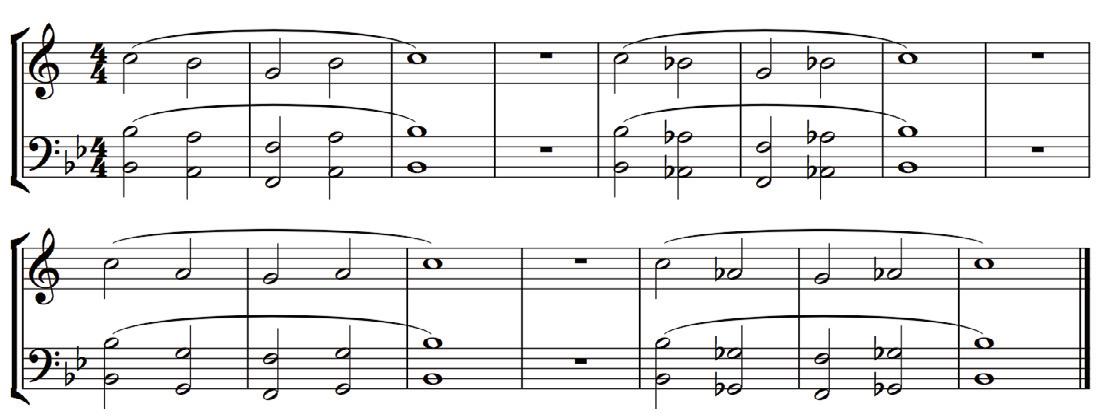

Modification of Example #2
Dr. Thomas Lukowicz is the Assistant Professor of Low Brass at the University of North Alabama, Tuba-Artist Faculty at the Tennessee Valley Music Festival, and has held the Principal Tuba position of the Canton Symphony Orchestra since 2007. Additional performance appearances include the Cincinnati Symphony, Glimmerglass Opera Orchestra, Louisville Orchestra, Pittsburgh Symphony Orchestra, Pittsburgh Symphony Brass, the Chamber Orchestra of New York, the Naples Philharmonic, and the New World Symphony. In 2001-2002, he was a member of the North American touring cast of Blast!.
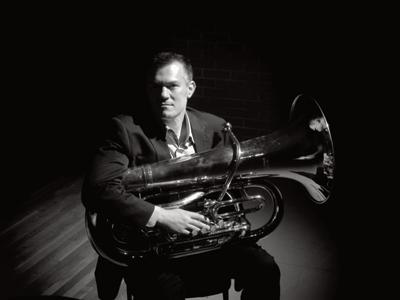
ala breve 31
Jazz: From the “Woodshed” To The Classroom

As we approach the upcoming fall with a level of uncertainty, remember why you got into music in the first place. Our students are going to need us now more than ever and it is best that we are prepared. This past March, our college moved to an online format like most schools. With restrictions in place, concerts and performances were canceled. Like several music programs, we scrambled and put together an online collaborative video from student phone submissions. We did our best to stay positive and kept students engaged.
To be honest, at the beginning of the summer I was feeling distraught and nervous to what may happen to music programs across the country. I looked at myself and said I have two options, “doom and gloom”/worry or try to be proactive and stay ahead of the curve. Education never stops and it certainly can’t happen without accepting a sense of humility. This summer I found a new energy in “shedding” on my horn and researching innovative ways to teach and learn music. I find myself putting 4-6 hours on my horn, reading research, and participating in online chats/listening sessions with some of the music giants like Wynton Marsalis and others. I know, this sounds like a lot! Everyone is different and that is okay! However, don’t sleep on opportunity.
I think back to my own development and can remember records and teachers that made a profound impact on me. These moments inspired me to follow a path into the music profession. Think about those moments in your personal upbringing. We will need to create these moments for our students. We need to be there for our students. I like to approach teaching like a mentor/mentee relationship. Sean Jones, the new JEN President, just wrote an opening address speaking along these lines. Here are some hallmarks, in his view, of great teaching relationships:
They last. They go beyond the time 1 parameters of lessons, classes, etc. They’re more about sharing and less 2 about lecturing.
They allow time to be fluid. True 3 learning incorporates time for discovery. Apprentices often do not “discover” the “how’s” in a particular time frame. They come to “knowing”
in their time. You don’t teach to get good reviews or 4 assessments to retain students. You give honest advice and truth in the spirit of progression and love, not worrying about the outcomes of those that cannot handle the truth. Long-suffering! True teaching is 5 patient. What takes one person a day, may take the next a year. Be there for both.
We must truly go beyond the classroom as many of us may be teaching coursework online. As we attempt to teach during these unprecedented times, it will be crucial to open up our hearts and spirits. Flexibility, trust, understanding, accountability, and growth is something we must all embrace.
Call a fellow educator, take a lesson with someone, or enroll in an educational workshop. Participate in online forums and video chats. Jazz at Lincoln Center offered an intense FREE 2-week online jazz academy with members of the Jazz at Lincoln Center Jazz Orchestra. I have taken pages of notes from these sessions and it is truly inspiring! Take a step back and reevaluate yourself and program. Reboot in a positive way. Despite the challenges, how can you take your students or program to the next level? I’ve been thinking about this quite a bit this summer and I am fairly excited about the year ahead. Our students will get to know more about the people behind the music. Everyone gets busy with deadlines, but this year can be a great opportunity to enrich our students like we have never had a chance to before. Do you realize how many of the greats or masters are available right now? Reach out to these individuals and make them accessible to students! Introduce your students to the history of this music through the voices of our legends. Instead of playing the “telephone game”, go to the source of the information. What was Clifford Brown like and why is he important to this music? Who was Art Blakey? Who was Charlie Parker? One can read about these things and perhaps your students should. However, what happens when your students interact with someone who knew Art Blakey or Count Basie, etc.? Let’s be creative, sincere, and honest with our students. Reach out to the greats and to the individuals that worked with them and loved them. Schedule an
online call with them for your students.
Some of us may not be able to rehearse large groups. Start jazz combos or a big band. This is an excellent time to try something different. There is so much that can be learned through the study of this music and they’re a lot of life lessons that can be taught. If you are not sure where to start, pick up the phone or send an email to someone that can help you! We are all in this together and I know many that would be excited to give advice or offer assistance. I know I’m willing to help in any way that I can! Here is my email (mleder@gadsdenstate.edu).
Technology is going to be big this year. While many educators may be afraid of the learning curve, remember again that education cannot happen without a sense of humility. Reach out to those that have creative ideas. Don’t worry, your students may catch on to the technology options faster than you do. I have been watching several workshops online on how to move forward with education during COVID-19. One particular workshop by Caleb Chapman really caught my attention. Our plan this Fall at Gadsden State is to rehearse in a Hybrid format so we can properly social distance. Our Show Band will rehearse in three different rooms simultaneously connected through audio/video equipment similar to a studio set up. We will also implement an online component where students will submit recorded parts in their music for evaluation. This format will hold students more accountable in the long run and honestly, we may retain some of these practices after the COVID-19 crisis.
These are just a few examples of how we are planning to make our program better during these strange times. Every program is different. Do you, but keep in mind growth starts with yourself. Remember, education is not restricted to a place. Let’s all go beyond the classroom. This is what we are being called to do as educators. I can’t wait to see everyone, on the other side of better!
In the spirit of swing, Dr. Matt Leder
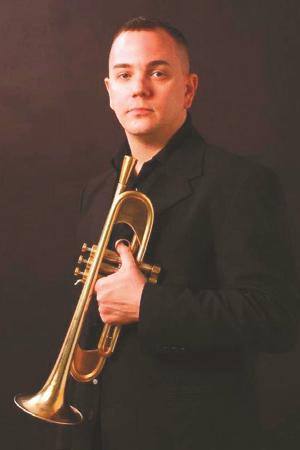
32 August/September 2020
by Dr. Matt Leder
DEPARTMENT OF MUSIC
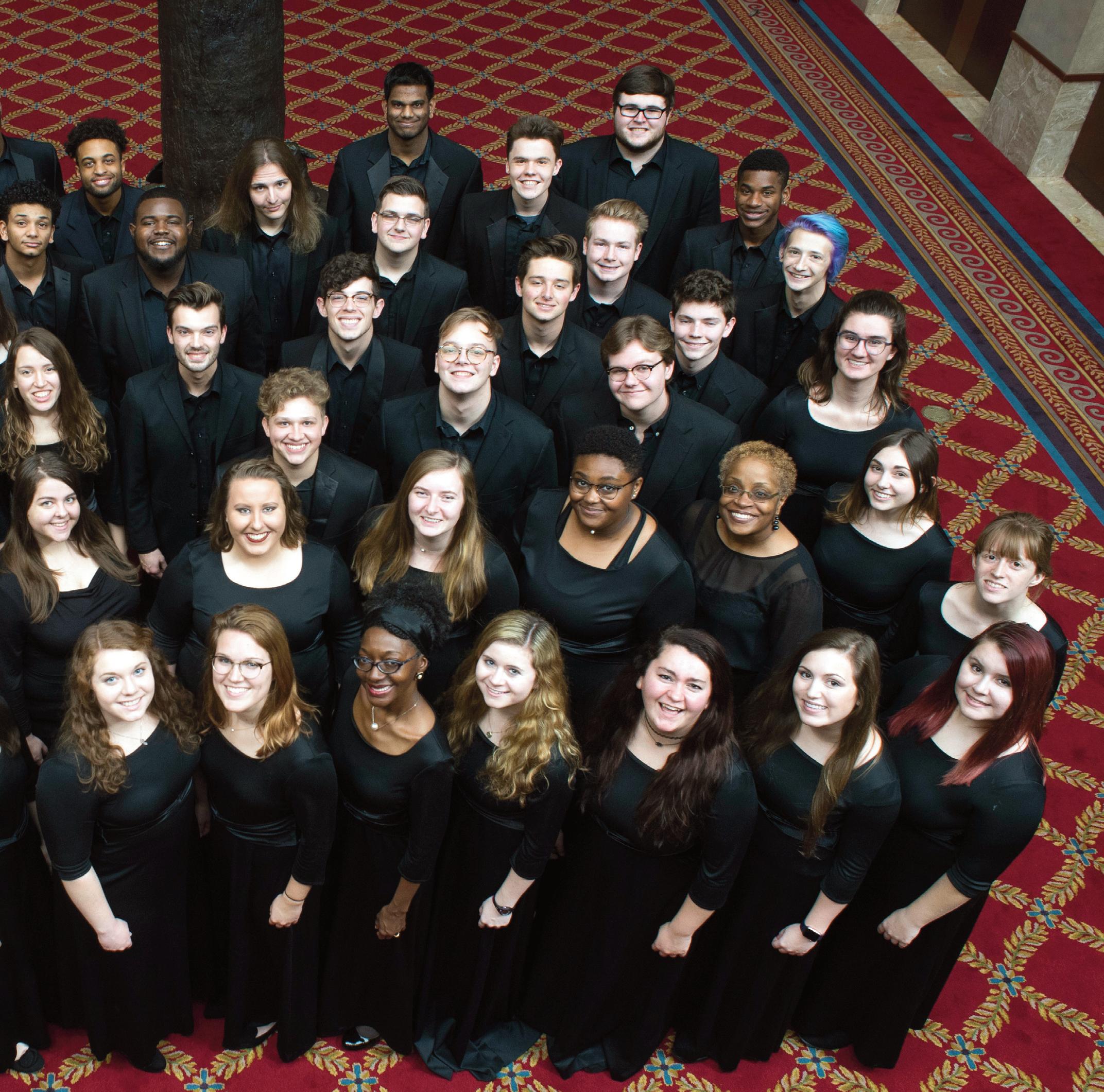

MUSIC THAT WILL CHANGE YOUR WORLD
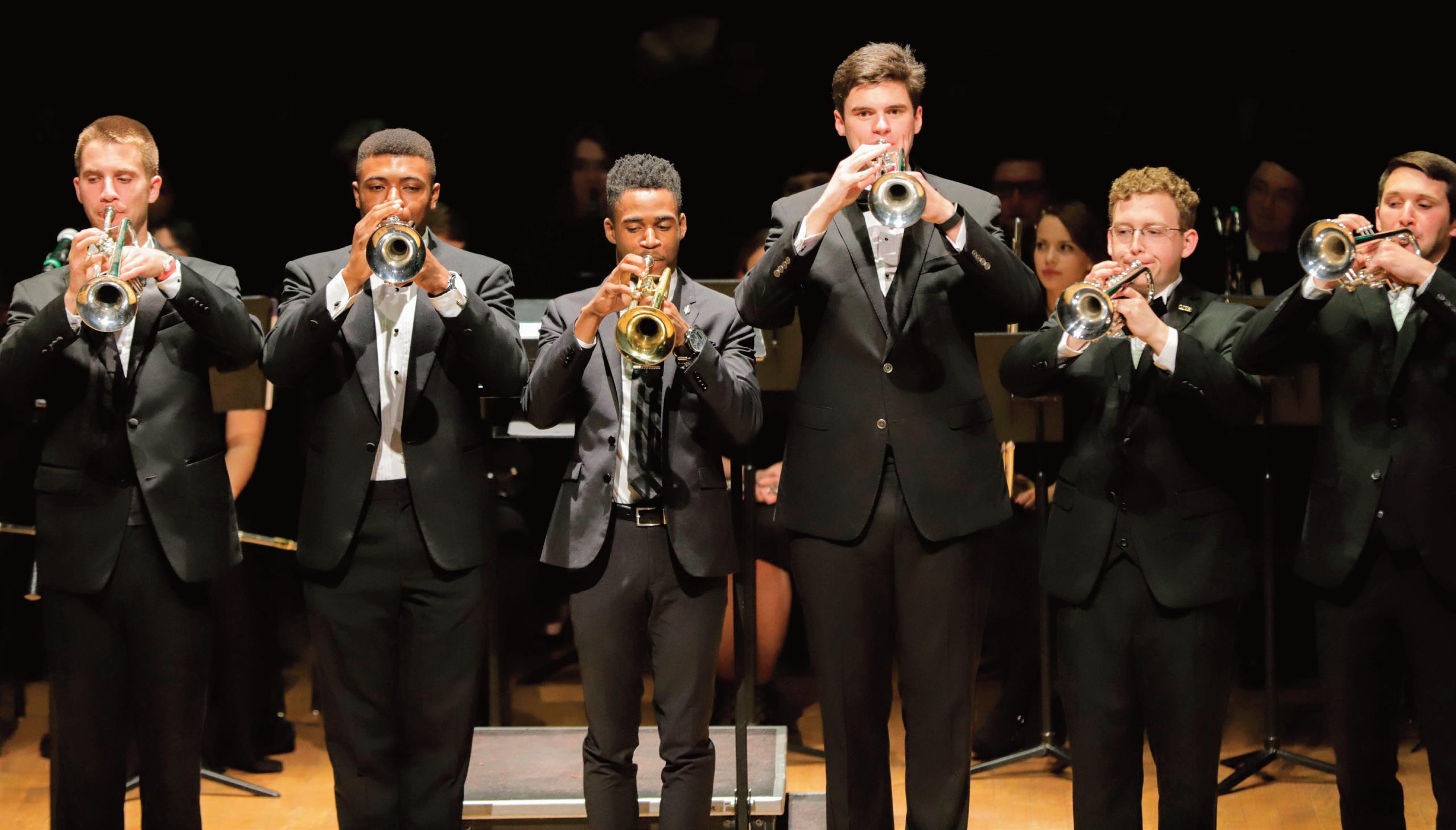

Alabama State Council on the Arts Fellowship


Montgomery, Ala. – At its June 4th quarterly meeting in Montgomery, the Alabama State Council on the Arts awarded twenty-one fellowships including a new fellowship category for arts educators with a total $105,000 in funding. Also awarded were five (5) Arts and Cultural Facilities grants totaling $137,850 for a grand total of $242,850. Fellowships are given to individuals working in arts education, dance, design, media/photography, music, literature, theatre, visual arts and crafts. These awards recognize artistic excellence as well as professional commitment and maturity. Recipients may use funds to set aside time to create art, improve their skills, pursue professional development, or to do what is most advantageous to enhance their artistic careers. According to Jim Harrison III, Chairman of the Council, “Our state is fortunate to have so many artists from every artistic discipline producing works of the highest caliber. Arts educators are utilizing funds provided for the arts in schools programs to ignite the imaginations of students needed in today’s job force.”
Megan Jones was awarded an arts educator fellowship in the amount of $5,000. Megan, the choir director at Decatur High School and Immediate Past-President of the Alabama Vocal Association, serves an increasingly diverse student body in her community. She uses music instruction to provide excellence and success for students who may be suffering from numerous anxiety disorders, trauma, homelessness and other social issues. She is intentional in her selection of uplifting repertoire including music that instills hope in her students and others.
Iain Riordan from Enterprise High School - Concert Band
Colby Batchelor from Sparkman High School - Concert Band
Christopher Dutton from Hoover High School - Mixed Choir.
The NAfME All-National Honor Ensembles (ANHE) represent the top performing high school musicians in the United States. So much more than a musical showcase, the ANHE program is a comprehensive and educational experience.

The 2020 ensembles will meet at the Gaylord Palms Resort & Convention Center in Orlando, Florida, under the leadership of top conductors in the field of music education. The ensembles will be comprised of:
Concert Band led by Rodney Dorsey
Symphony Orchestra led by Nobuyoshi Yasuda
Mixed Choir led by Frances Fonza
Jazz Ensemble led by Todd Stoll, with Guest Soloist Terell Stafford
Guitar Ensemble led by Chuck Hulihan
Modern Band led by Tony Sauza
ala breve 35 Noteworthy
Alabama had three students selected to the ANHE which will be held November 5-8 in Orlando.
AMEA Division Events 2020 - 2021
Alabama Bandmasters Association
36 August/September 2020
District Event Location Date Deadline Statewide AMEA Montgomery, AL January 21-23, 2021 All State Solo Festival University of South Alabama April 14, 2021 3/1/2021 All State Festival Outlaw Convention Center April 15-17, 2021 3/1/2021 Summer Convention Hampton Inn June 15-17, 2021 District 1 District Fall Meeting James Clemens HS August 24, 2020 08/17/2020 Fall Solo and Ensemble Liberty MS November14,2020 10/23/2020 All State/ District HB Auditions Sparkman HS January 29 & 30, 2021 1/8/2021 District Honor Band Grissom HS February 12 &13, 2021 1/8/2021 MPA #1 James Clemens HS March 2-4, 2021 1/22/2021 MPA #2 Hartselle HS March 10-11, 2021 1/22/2021 Solo and Ensemble #1 Priceville HS April 10, 2021 2/21/2020 Solo and Ensemble #2 Meridianville MS April 24, 2021 3/20/2020 District Spring Meeting James Clemens HS May17,2021 District 2 District Fall Meeting Gadsden City HS Band room August 25, 2020 All State Auditions Albertville HS January 9, 2021 12/9/2019 District Honor Band Gadsden City HS February 5-6 2021 1/22/2021 MPA Gadsden City HS Audiorium February 23-26, 2021 1/22/2021 Solo and Ensemble #1 Southside HS April 12, 2021 3/19/2021 Solo and ensemble #2 Oxford HS April 26, 2021 4/2/2021 District 3 District Fall Meeting TBD TBD All State Auditions Muscle Shoals HS January 30, 2021 1/11/2021 District Honor Band Russellville HS February 12-13, 2021 2/2/2021 MPA UNA March 9-11, 2021 2/5/2021 Solo and Ensemble Muscle Shoals HS May 1, 2021 4/12/2021 District 4 District Fall Meeting Vestavia Hills HS September 14, 2020 All State Auditions Hoover HS January 30, 2021 1/15/2021 District Honor Band Pelham HS February 26-27,2021 2/5/2021 MPA Week 1 Vestavia Hills HS March 9-11, 2021 12/18/2020 MPA Week 2 Thompson HS March 16-18, 2021 12/18/2020 Solo and Ensemble #1 Thompson MS April 27, 2021 4/2/2021 Solo and Ensemble #2 Bumpus MS May 1, 2021 4/2/2021 District Spring Meeting Vestavia Hills HS May 18, 2020 District 5 District Fall Meeting Zoom Call August 31, 2020 All State/DHB Auditions Brookwood HS January 30, 2021 1/15/2021 District Honor Band University of Alabama February 19-20, 2021 2/5/2021 District Spring Meeting University of Alabama February 20, 2021 MPA University of Alabama March 3-5, 2021 2/5/2021 Solo and Ensemble #1 Prattville JHS April 6, 2021 3/16/2021 Solo and Ensemble #2 Tuscaloosa Co. HS April 29, 2021 4/8/2021 District 6 District Fall Meeting TBA August 22, 2020 Fall Solo and Ensemble Auburn JHS November 21, 2020 10/30/2020 All State Auditions Opelika HS January 30, 2021 1/8/2021 District Honor Band Auburn HS February 19-20,2021 2/8/2021 MPA Benjamin Russell HS March 1-4,2021 2/12/2021 Solo and Ensemble Wetumpka MS April 24, 2021 4/2/2021 District Spring Meeting TBA May 10, 2021 District 7 District Fall Meeting Davidson High School August 26, 2019 Fall Solo and Ensemble TBA November 14, 2020 10/16/2020 All State Auditions Saraland HS January 30, 2021 1/15/2021 MPA Baker HS March 9-12, 2021 2/5/2021 District Honor Band Theodore High School March 18-20, 2021 2/19/2021 Solo and Ensemble Spanish Fort MS May 1, 2021 4/2/2021 District Spring Meeting Daphne High School May 24, 2021 District 8 District Fall Meeting TBA August 24, 2020 All State Auditions Coppinville JH Enterprise January 30, 2021 1/15/2021 MPA Enterprise Performing Arts Center March 2-4, 2021 02/05/21 District Honor Band Enterprise HS March 5-6, 2021 2/5/2021 District Spring Meeting Enterprise HS March 5, 2021 Solo and Ensemble #1 Daleville HS May 1, 2021 4/9/2021 Solo and Ensemble #2 Greenville HS May 8, 2021 4/9/2021
ala breve 37
Elementary/General
August 29, 2020 East Alabama General Music Workshop Online: https://forms.gle/aeP2DUM9XTHLR6Vz5 AMEA Choral Festival Cancelled/Postponed until October 2021 October 17, 2019 AMEA/AOSA Fall Workshop Online: More info to come January 21-23. 2021 AMEA Professional Development Conference Renaissance Montgomery Hotel and Spa
Collegiate Division TBA Collegiate Summit Online: October 25, 2020 1:30-4:30 pm January 21-23, 2021 AMEA Professional Development Conference Renaissance Montgomery and Convention Center August 5, 2020 All-State Audition Materials Released January 21-23, 2021 AMEA Conference October 9-18, 2020 All-State String Auditions (Multiple Locations) February 11-14, 2021 All-State Orchestra Festival November 6-15, 2020 All-State Woodwind, Brass, and Percussion Auditions April 16-17, 2021 Orchestra Music Performance Assessment Event Date Reg. Deadline Location Fall Workshop Thursday, September 10, 2020 Online ASSC Auditions Friday, October 16, 2020 Thursday, September 18, 2020 Online All State Auditions November 02-10, 2020 Thursday, September 17, 2020 Online AMEA January 21-23, 2021 See AMEA website Renaissance Montgomery ASSC January 21-23, 2021 Wednesday, December 02, 2020 Renaissance Montgomery All-State March 4-6, 2021 Wednesday, January 27, 2021 BJCC OCS/OA/ME District Date Reg. Deadline Location I Monday, November 16, 2020 Thursday, October 01, 2020 Online II Tuesday, November 17, 2020 Thursday, October 01, 2020 Online III Friday, December 04, 2020 Thursday, October 01, 2020 Online IV Thursday, November 19, 2020 Thursday, October 01, 2020 Online V Tuesday, November 17, 2020 Thursday, October 01, 2020 Online VI Tuesday, November 17, 2020 Thursday, October 01, 2020 Online VII Thursday, October 29, 2020 Thursday, October 01, 2020 Online Solo & Ensemble District Date Reg. Deadline Location I Wednesday, February 24, 2021 Wednesday, January 27, 2021 University of North Alabama (Tentative) II Fri-Sat, February 26-27, 2021 Friday, January 29, 2021 The University of Alabama (Tentative) III Saturday, February 20, 2021 Friday, January 22, 2021 Cahaba Heights UMC (Tentative) IV Thursday, February 18, 2021 Thursday, January 21, 2021 Jacksonville State University (Tentative) V TBA (2/15-4/16) Wed-Thur, March 24-25, 2021 Hunstville FBC (Tentative) VI Tue-Wed, April 6-7, 2021 Tuesday, March 9, 2021 Enterprise High School (Tentative) VII Tuesday, February 23, 2021 Tuesday, January 26, 2021 Springhill Baptist Church (Tentative) SCPA District Date Reg. Deadline Location I February 24 & 25 ,2021 Wednesday, January 27, 2021 UNA (Wed)/Decatur FBC (Thur) (Tentative) II Fri-Sat, February 26-27, 2021 Friday, January 29, 2021 The University of Alabama (Tentative) III Mon-Wed, March 29-31, 2021 Monday, March 01, 2021 Canterbury UMC (Tentative) IV Thursday, April 08, 2021 Thursday, March 11, 2021 Gadsden City High School (Tentative) V Thur-Fri, February 25-26, 2021 Thursday, January 28, 2021 Grissom High School (Tentative) VI Tue-Wed, April 6-7, 2021 Tuesday, March 9, 2021 Enterprise High School (Tentative) VII Thursday, March 18, 2021 Thursday, February 18, 2021 Springhill Baptist Church (Tentative)
Alabama Vocal Association Alabama Orchestra Association
Division
AMEA
Preventing Injuries in Marching Band: Survey of Alabama Band Directors
Robert Glasscock
to 384 directors using the Alabama Bandmasters Association’s Directory. This resulted in a total of 154 completed surveys.
Each summer, marching bands across the country prepare elaborate shows for football games and contests. Often times directors are ill-equipped to handle situations that may arise from injuries that occur due to the exposure to heat and continuous marching (Vepraskas, 2002). Most of the injuries associated with marching band take place during the beginning of the marching season around the months of August and September (Mehler, Brink, Eickmeier, Hesse, & McGuire, 1996).
The injuries most often associated with marching band include dehydration and upper and lower body injuries. Most of these injuries occur at the beginning of the marching season (Mehler, et al., 1996), therefore, band directors should focus their attention on conditioning programs during the months of July and August, when most marching bands start preparing for the upcoming marching season. Band members most at risk for injuries are those with a higher body mass index (BMI), little physical activity outside of marching band, and those with previous injuries (Knapik, 2007). According to the Centers for Disease Control and Prevention, almost 34% of high school students in Alabama are considered overweight or obese (2018).
Review of Literature
Injuries are inevitable in any endeavor that requires physical effort from participants. Prevention is the key to limiting the injuries associated with marching band. Previous studies have investigated the various injuries suffered from participation in marching band, the effects of dehydration on band members, heart rates of marching band members, and even step counts during rehearsals, but very few have focused on preventing injuries (Kilanowski, 2008; Knapik, et al., 2007; Mehler, et al., 1996; Murray, 2007; Vepraskas, 2002).
Injuries occur more frequently at the
beginning of the marching band season and then decrease as the season progresses. This is due in part to the decreased amount of time spent practicing at the end of the season and the improved cardiovascular fitness and technical skills of the marching band members (Mehler, et al., 1996).
The National Athletic Trainers’ Association (NATA) established a set of guidelines to promote the safety of those students who participate in marching band. The first guideline from the NATA was that students should receive a general health exam prior to the activity to make sure they were fit to perform. The next guideline was to start preparing for the marching season about four weeks prior to the first rehearsal by walking 20 minutes each day and to gradually increase the time spent walking outside. The NATA also recommended that students use appropriate stretches and warm-ups before and after practice. Guptill and Zaza state that there is evidence that stretching may help reduce soreness when performing new activities (2010). The final guideline from the NATA encourages directors and students to “wear light or white colored shorts and tshirts to avoid overheating during practice. This is especially important for anyone carrying heavy instruments for long periods of time” (2006, ¶7).
According to Vepraskas (2002) “Most directors receive little or no training in health-related issues” (p. 237). It is the responsibility of each director to know the risks and have a basic knowledge of the preventative measures associated with injury prevention in marching band.
Methods and Procedures
The potential target population for this study was marching band directors from the state of Alabama, who were also members of the Alabama Bandmasters Association. Data collection was conducted through an anonymous online survey. An email was sent
The research instrument used in this study was an anonymous online survey created using Qualtrics. The survey was divided into four sections and included 45 questions that covered: (a) general demographic information about the director’s marching band, (b) whether directors have ever completed any first aid training and if so what type, (c) how confident directors are at handling various student injuries, and (d) ways in which marching band directors promote injury prevention.
Results
Results from the survey were examined using descriptive statistics. One hundred fifty-four marching band directors, resulting in a response rate of 40%, submitted completed surveys. The largest group of participants (37%) was within the first five years of teaching. A majority of those surveyed are male (74%), and teach at a rural high school (57%). All seven divisions of the AHSAA classifications were represented in the survey, with 4A and 3A being the most represented (18% each). Three marching band programs from the Alabama Independent School Association also responded to the survey. Finally, a majority (59%) of the participants’ direct programs with student populations between 51 – 100 students, and most (62%) classified their program as “Corps Style – Competitive.” Ninety-seven percent of participants also stated that some of their students participate in a school-sponsored sport in addition to marching band.
In questions 10 – 16, participants were asked about band camp and rehearsal schedules. Seventy percent of the participants hold a two-week band camp prior to the start of the school year. Once the school year begins, 59% of participants indicated that they do not rehearse their marching band outside during the school day. Fifty-eight percent of marching bands rehearse after school 3 times a week during football season, with 42% stating that they spend more than 5 hours a week rehearsing outdoors after school. In addition, 18% stated that they have held rehearsals on the weekend, and 37% of those rehearsed for 2 hours.
Medical training for band directors was the focus of questions 18 – 23. When asked if they had received any type of medical
38 August/September 2020
training in their preparation to become a band director, or during their career, 77% stated that they had received such training. The majority (64%) received this training through workplace professional development, while 24% took first aid courses outside of the workplace. Thirteen percent of the participants said they had a school nurse available at home football games, but 35% of participants stated that they did not have a nurse provided by the school at all. Sixty-two percent of participants said that they had not had a medical issue arise that they were unprepared to handle. Of those that said that they had a medical issue arise, some of the examples given included serious, and sometimes life-threatening situations such as seizures, mental health issues, Type I diabetes, and chest pains. Forty-five percent of the participants felt confident in their ability to handle student physical injuries.
Questions 29 – 33 examined director’s perceptions regarding injury prevention. Fifty-seven percent of the participants admitted that they do not have a physical conditioning program in place for their marching band, but 32% said that they have their students stretch before each rehearsal. Most of the participants (43%) felt that their students had some understanding of the risks involved with marching band, and when asked how often they instruct their students on injury prevention, 48% said “sometimes.” Seventy-nine percent of participants indicated that their students were not required to complete a physical before participating in marching band, and 67% said that their students were still required to take a physical education class while in high school. Of the 67% of participants that stated their students were still required to take a physical education class, 45% of those said that marching band did count towards the PE credit. Though marching band is not sanctioned as a sport by the Alabama High School Athletic Association, many of the items found on the physical form that each high school studentathlete must have completed by a doctor would also pertain to marching band. For example, the physical form asks students if they have ever passed out during practice, had prior heart conditions, had seizures, and if the students have had any prior injuries to bones or joints (Alabama High School Athletic Association, 2015). These are some of the very same items that band directors had listed in the survey when they were asked if they had ever had a medical issue
arise that they did not feel prepared to handle. Having this information at their disposal would mean that directors are aware of potential problems that their students may encounter or experience during the marching band season.
Questions 34 – 44 asked participants a series of questions focused on ways they encourage injury prevention in their marching band program. Ninety-eight percent of participants said that they required a specific shoe for marching rehearsals. Of the choices offered, tennis shoes were the most accepted shoe choice, followed by running shoes, walking shoes, cross trainers, boots, and other types.
Participants were next asked about earplugs to help prevent hearing loss, and if they felt it was their responsibility to encourage their students to wear them. Sixty-three percent of the participants felt that it was their responsibility to encourage their students to use earplugs while participating in marching band activities, but 47% felt that their students only wore earplugs some of the time, while 45% said students never used earplugs. Ninety-three percent of participants felt that it was their responsibility to encourage students to wear sunblock while practicing outdoors. However, 45% said they felt that their students only wore it some of the time. Question 40 asked if participants required students to wear specific clothing at outdoor rehearsals, and 91% said that they did require specific clothing.
Questions 41 – 42 inquired about directors’ attitudes toward injuries and injury prevention. When participants were asked how often they allowed a student to sit down and rest during a rehearsal if the student complained about not feeling well, 58% of participants said that they allow students to sit down and cool off no matter what the situation, 35% said it depends on the situation as to whether they can sit down, while 7% said they would let the student sit down, but only if they felt it was absolutely necessary. The participants were asked if they encouraged students to rest and seek treatment after an injury, and 68% said they did so immediately, while 31% indicated that it depended on the student.
Sixty-five percent of participants stated that they take breaks every 30 minutes while rehearsing outdoors in high heat conditions (90+ Degrees). Forty-nine percent of the
participants indicated that they give students a 10-minute break and 39% take a 5-minute break. Eighty-eight percent of the participants provide water during the breaks, and 82% have an area near their practice field to allow students to be shaded from the sun during breaks. Allowing students to sit down when needed is crucial to the safety of students during hot summer rehearsals.
Question 45 asked for the opinion of the participants as to what they felt was the biggest factor for students missing or sitting down during outdoor rehearsals. They were asked to rank a set of possible responses from 1 to 6, with 1 representing the biggest factor and 6 representing the smallest. The factor that the majority of participants picked as the leading cause for students to sit down during outdoor rehearsals was not drinking enough water (37%), and this was followed by students not eating before a rehearsal (24%). The final question asked participants how likely they would be to allow a student to sit down during an outdoor marching rehearsal based on a series of situations. If a student complained about feeling faint, 80% of participants were very likely to allow the student to sit down, while an insect bite (16%) was the least likely to be a reason to allow a student to sit down during an outdoor rehearsal.
Discussion
The NATA guidelines recommend that students should receive a general health exam prior to the start of marching band season to make sure they were fit to perform, but participants of this study indicated that the majority of them do not require their students to complete a physical before participating in marching band. What is unclear from this study is whether this is a choice from the band director or the school administration as to whether band students are not required to receive a physical.
The NATA also recommended that directors have a plan to start preparing for the marching season about four weeks prior to the first rehearsal by walking 20 minutes each day and gradually increase the time spent walking outside. This type of physical conditioning program may be very helpful in acclimating students to outdoor marching rehearsals; however, the majority of participants said that they do not have such a conditioning program in place.
The implementation of stretching and the use of warm-ups before and after band practice would be beneficial to students.
ala breve 39
“Athletic trainers in the past have claimed that stretching improves performance and reduces injuries in athletes” (Guptill & Zaza, 2010, p. 29). Guptill and Zaza state that there is evidence that stretching may help reduce soreness when performing new activities (2010). The majority of marching band directors that responded agreed with this and indicated that they always have their students stretch before rehearsal, but some said that they only stretch sometimes or not at all. The majority of participants also said that they are spending more than five hours a week in rehearsal time over the course of a three-day period. This is usually spent performing repetitive marching maneuvers, and having students move from set to set learning drill. This is a large amount of time having students stand in the position of attention, holding instruments, and marching. This causes a lot of stress and possible soreness in their back, lower legs, feet, and ankles. All directors need to have their students take time to stretch before and after rehearsals to help relieve the soreness.
Shoes are one of the most important articles of clothing for marching band members. According to previous research, the cross trainer shoe is the shoe best suited for marching band. Requiring students to wear a specific type of shoe seemed to be of greater importance to directors than any other aspect of injury prevention. Ninetyeight percent of directors said they require their students to wear a specific shoe, while 91% said they require specific clothing at rehearsals. Wearing a specific shoe even seemed to be more important than encouraging their students to wear sunblock (93%) or wear earplugs (63%).
Hydration is another cause for concern for marching band directors. It has been suggested that directors should always make sure that band members have sports drinks and water available during rehearsals and at performances. Participants indicated that most provide water for their students at rehearsals.
When rehearsing outdoors in high heat and humid conditions, it is recommended that students be able to take breaks in shaded areas out of the direct sunlight. If a student is suffering from dehydration or even heat stroke, the first step to help them is to move them to a cool, shady area (Vepraskas, 2002). It is encouraging to note that the majority of participants stated that they had an area of shade near their practice fields to allow
students to take breaks out of the direct sunlight.
Implications
This study holds several implications for marching band directors. These implications can best be illustrated by one key participant’s comment when asked if there had ever been a medical issue that arose that they felt unprepared for:
We have had numerous medical issues arise and I always feel that there is very little that I can do other than assess the situation and contact the paramedics.
Ultimately, it is up to the individual director to decide what types of injury prevention will be used in their program. Too many young directors are put into situations that place a high demand on them regarding injury prevention and basic first aid. The guidelines from the National Athletic Trainers’ Association should become firsthand knowledge for band programs throughout the country.
The majority of participants had a favorable opinion about their abilities to handle medical situations that may arise, however, over a third of participants were not confident in their ability to handle medical issues. The majority of participants also stated that they instruct their students about injury prevention some of the time. Injury prevention and basic first aid knowledge should become a priority in band director education programs to prepare band directors to be successful in injury prevention and medical situations.
References
Alabama High School Athletic Association (2015). Preparticipation Physical Evaluation Form. Retrieved November 20, 2018, from http://www.ahsaa.com
Centers for Disease Control and Prevention. (2018). National Center for Chronic Disease Prevention and Health Promotion, Division of Nutrition, Physical Activity, and Obesity. Data, Trend Maps. Retrieved November 20, 2018, from https://www.cdc.gov/nccdphp/dn pao/data-trends-maps/index.html
Guptill, C., & Zaza, C. (2010). Injury prevention. Music Educators Journal, 96(4), 28-34. https://doi.org/10.1177/00274321
10370736

Kilanowski, J.F. (2008). Marching athletes: Injuries and illnesses at band camp.
The American Journal of Maternal/Child Nursing. 33(6), 338345.
https://doi.org/10.1097/01.NMC. 0000341252.95674.9f
Knapik, J.J., Jones, S.B., Darakjy, S., Hauret, K.G., Nevin, R., Tyson, G., Jones, B.H. (2007). Injuries and injury risk factors among members of the United States Army Band. American Journal of Industrial Medicine, 50(12), 951-961.
https://doi.org/10.1002/ajim.2053 2
Mehler, A.S., Brink, D.S., Eickmeier, K.M., Hesse, D.F., McGuire, J.W. (1996). Marching band injuries: A oneseason survey of the University of Michigan marching band. Journal of the American Podiatric Medical Association 86(9), 407-413. https://doi.org/10.7547/87507315 -86-9-407
Murray, B. (2007). Hydration and physical performance. Journal of the American College of Nutrition, 26(5), 542S548S.
https://doi.org/10.1080/07315724 .2007.10719656
National Athletic Trainers’ Association (2006). Tips to keep marching bands healthy and hydrated on the field. Retrieved July 21, 2017, from http://athletesandthearts.com
Vepraskas, C. (2002). Beat the heat: Managing heat and hydration in marching band. The Journal of School Nursing, 18(4), 237-243.
https://doi.org/10.1177/10598405 020180042001
Robert Glasscock is pursuing his Ph.D. in Music Education at Auburn University. He earned his Bachelor of Music Education degree from Troy State University in 2000, Master of Education in Music Education from Alabama State University in 2005, and Specialist Degree in Music Education from Auburn University in 2018. Mr. Glasscock is currently the Director of Bands at Tallassee High School.
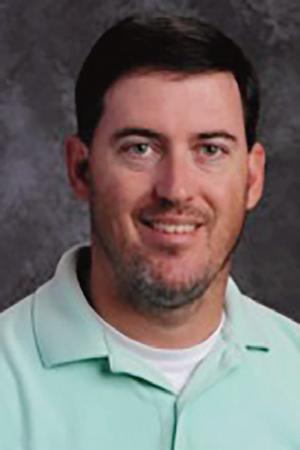
40 August/September 2020

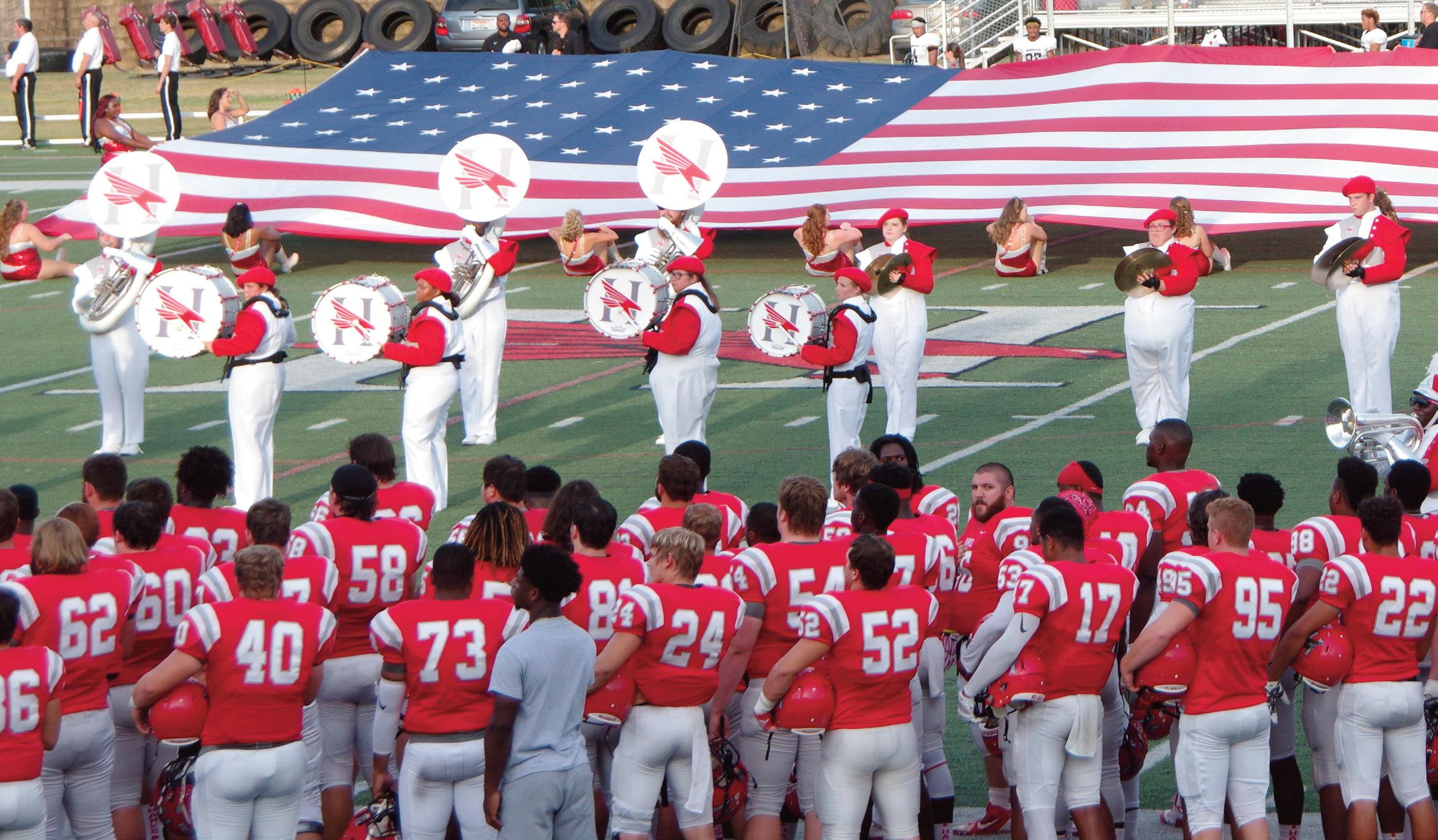
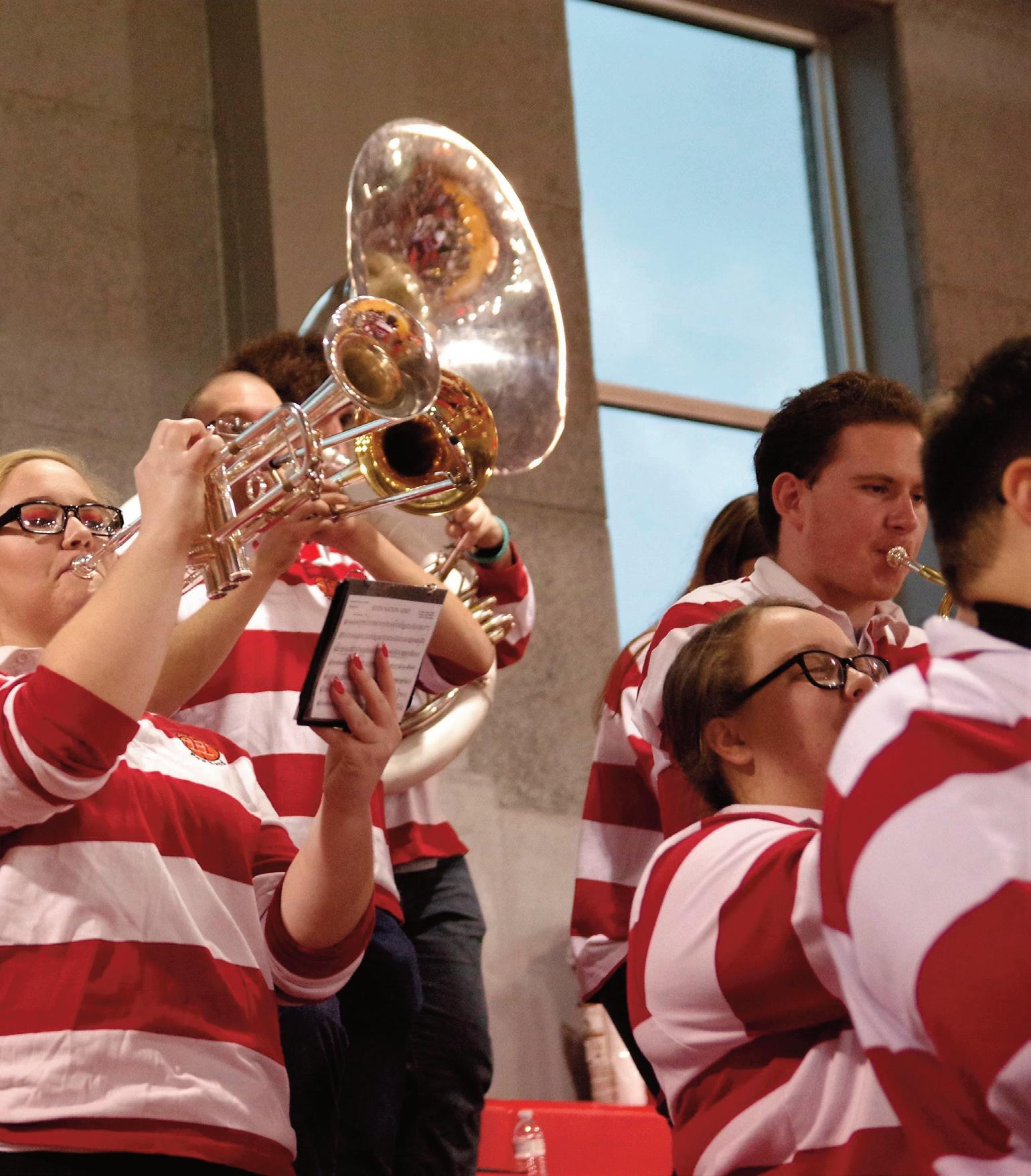
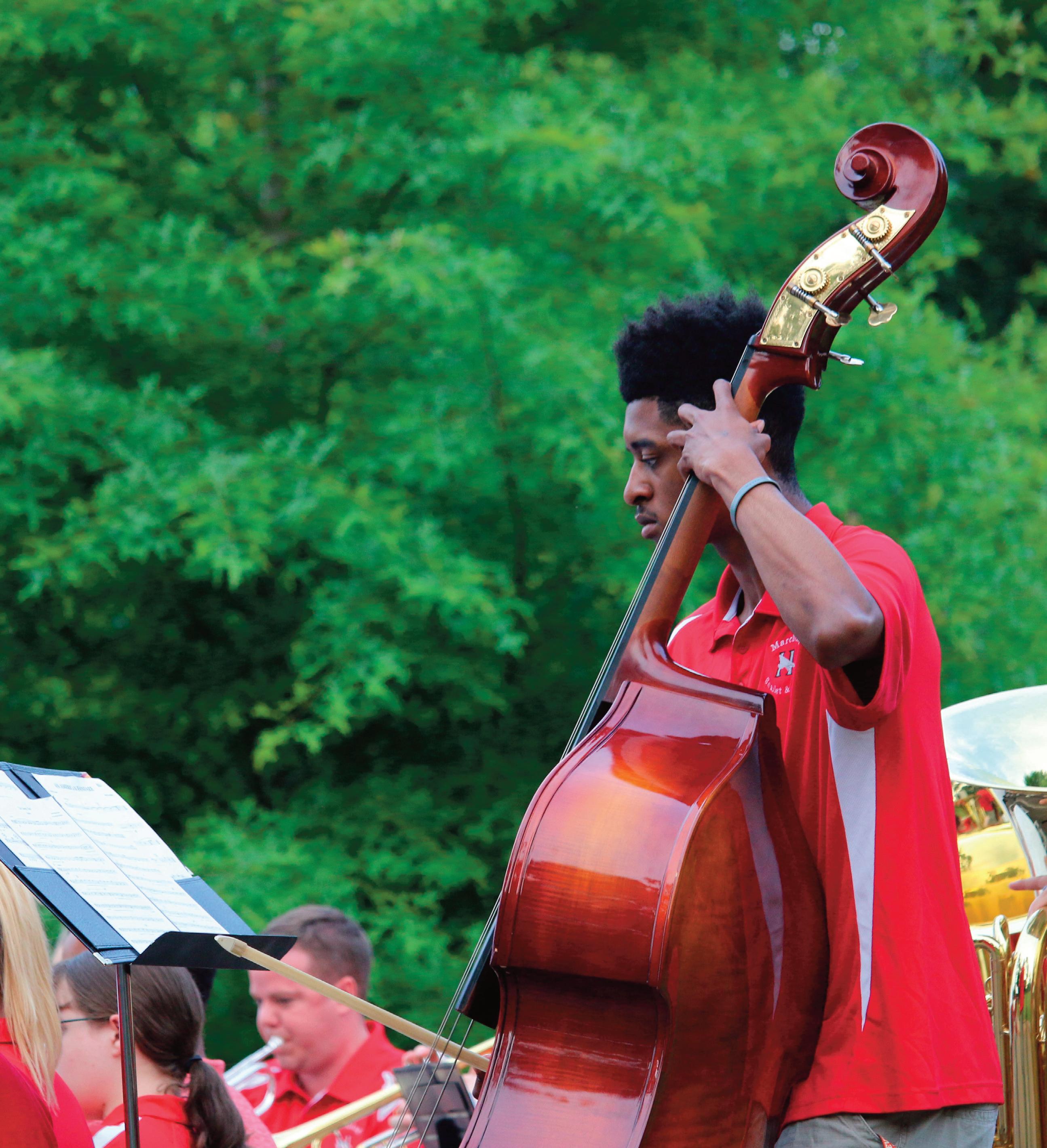


HUNTINGDON BANDS Huntingdon College Bands @huntingdonbands
BallHawks Pep Band
Huntingdon Winds & Jazz Huntingdon College is committed to a policy against legally impermissible, arbitrary, or unreasonable discriminatory practices. Huntingdon College is accredited by the Southern Association of Colleges and Schools Commission on Colleges to award the Bachelor of Arts, Bachelor of Science, and the Associate of Arts. Contact the Commission on Colleges at 1866 Southern Lane, Decatur, Georgia 30033-4097 or call 404-679-4500 for questions about the accreditation of Huntingdon College. The Huntingdon College music program is accredited by the National Association of Schools of Music.
Marching Scarlet & Grey Honor Bands: huntingdon.edu/bands Email: hcbands@hawks.huntingdon.edu
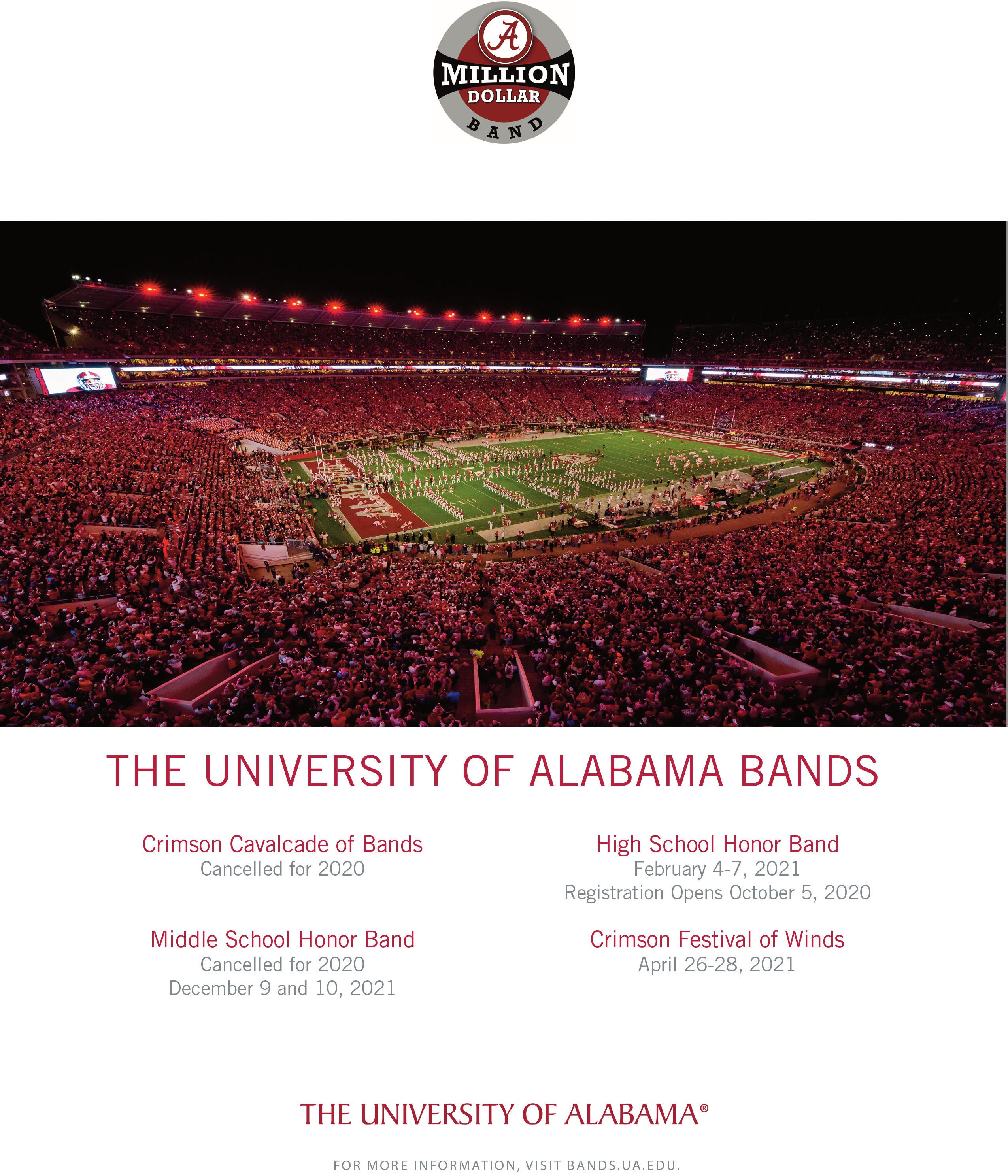




























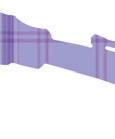












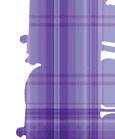





























































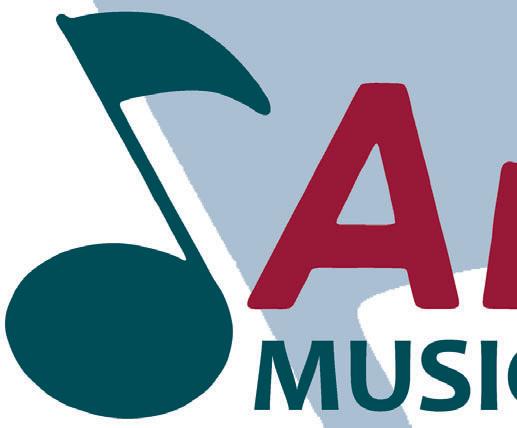
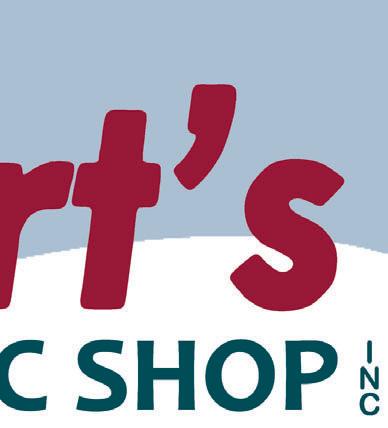













Serving the South’s Bands & Orchestras since 1905 Montgomery 3030 East Blvd 334.271.2787 Dothan 1861 W Main St #1 334.793.1284 4647-O Hwy 280S 205.995.8376 800-341-2787ArtsMusicShop.com East B l vd 33 4. 2 71. 2 7 8 7 S t # 1 33 4.7 93.12 8 4 4 647-O Hw y 280S 2 05.995.83 76 PRSRT STD US POSTAGE PAID Dothan, AL 36303 Permit No. 623





























































 Auburn University
Auburn University























































































































